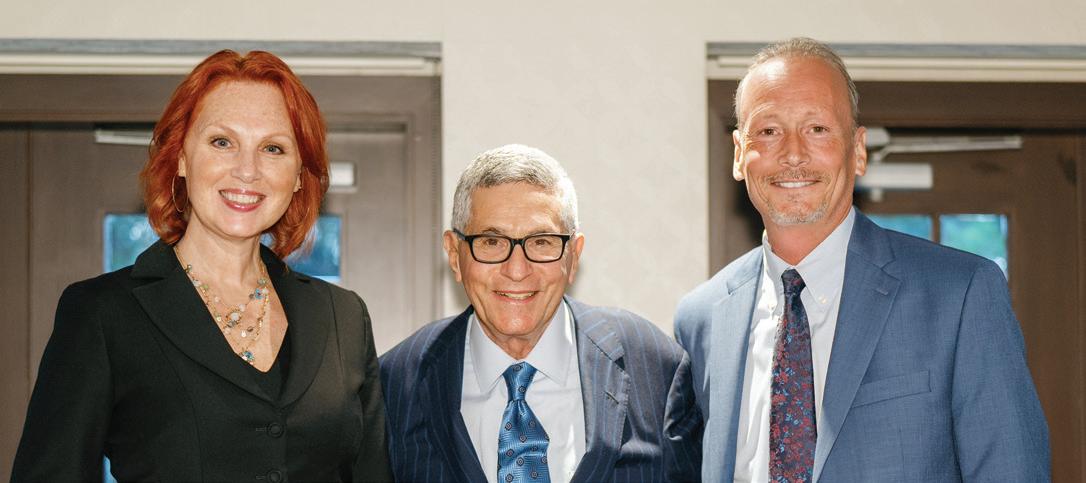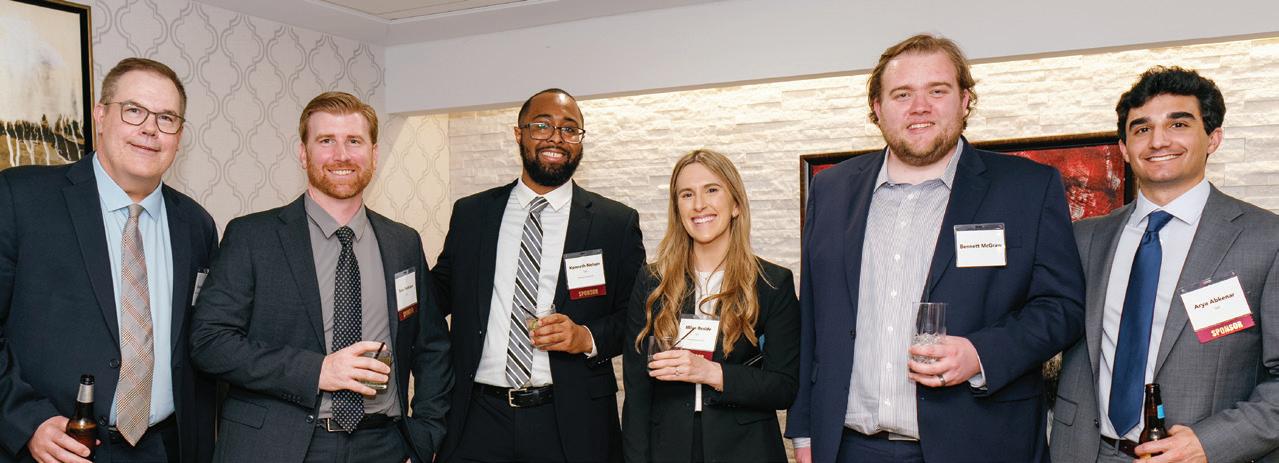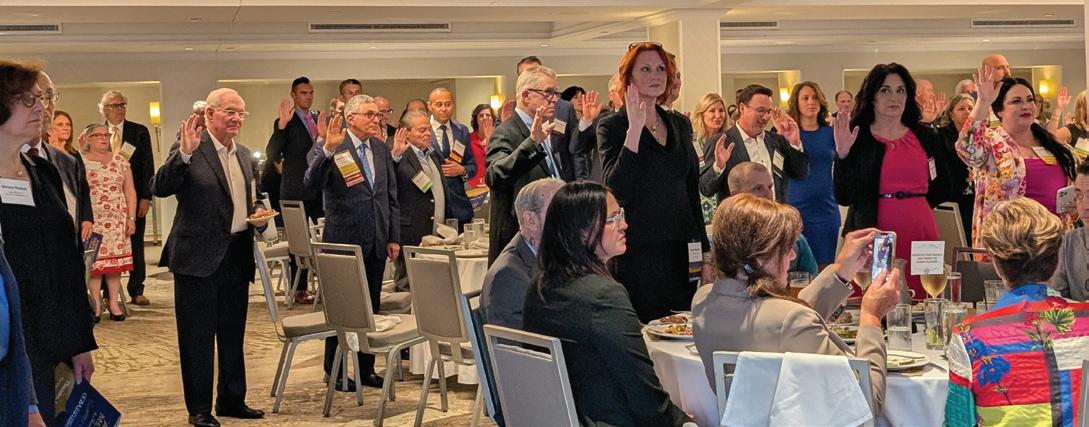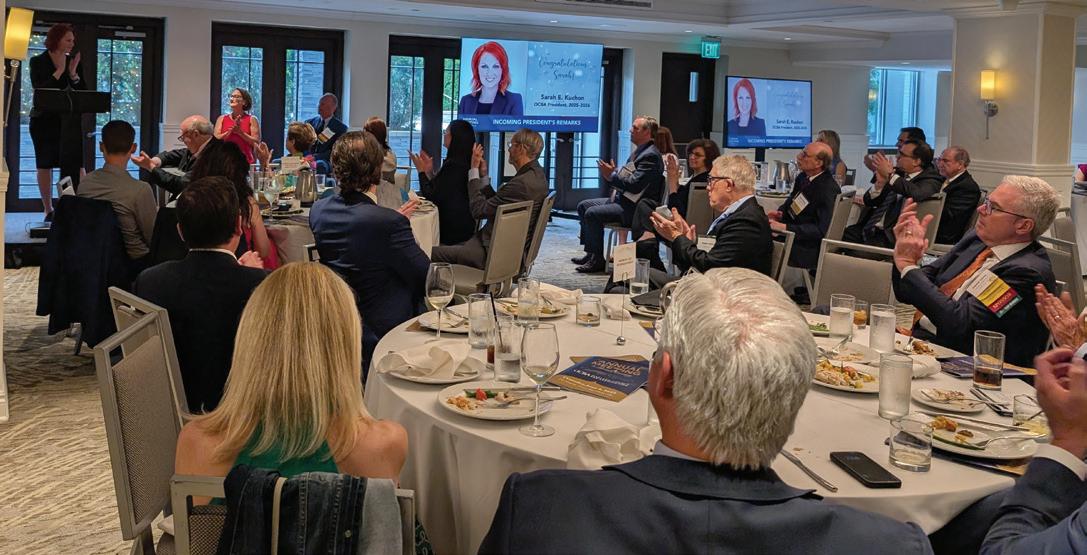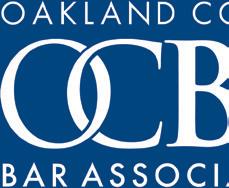
















OAKLAND COUNTY BAR ASSOCIATION
1760 S. Telegraph Road, Suite 100
Bloomfield Hills, Michigan 48302-0181
(248) 334-3400 • FAX (248) 334-7757 www.ocba.org

PRESIDENT
Sarah E. Kuchon
PRESIDENT-ELECT
Aaron V. Burrell
VICE PRESIDENT
Kari L. Melkonian
TREASURER
Victoria B. King
SECRETARY
Syeda F. Davidson
EXECUTIVE DIRECTOR
Jennifer Quick
LACHES EDITORIAL BOARD
Victoria B. King
Syeda F. Davidson
Coryelle E. Christie
DIRECTORS
Julie L. Kosovec
Emily E. Long
Jennifer L. Lord
Moheeb H. Murray
Kimberley Ann Ward
Layne A. Sakwa
Silvia A. Mansoor
Stephen T. McKenney
James A. Martone
Jennifer J. Henderson
DELEGATE
James W. Low
Lanita L. Carter
Thamara E. Sordo-Vieira
Xavier J. Donajkowski
THE MISSION OF THE OAKLAND COUNTY BAR ASSOCIATION IS TO SERVE THE PROFESSIONAL NEEDS OF OUR MEMBERS, IMPROVE THE JUSTICE SYSTEM AND ENSURE THE DELIVERY OF QUALITY LEGAL SERVICES TO THE PUBLIC.
Articles and letters that appear in LACHES do not necessarily reflect the official position of the Oakland County Bar Association, and their publication does not constitute an endorsement of views that may be expressed. Readers are invited to address their own comments and opinions to:
LACHES | Oakland County Bar Association
1760 S. Telegraph Rd., Ste. 100 Bloomfield Hills, MI 48302-0181
Publicationandeditingareatthediscretionoftheeditor.
LACHES
Oakland County Bar Association, 1760 S. Telegraph, Ste. 100, Bloomfield Hills, MI 48302-0181.
Zoning Regulation Has Become Increasingly Flexible with the Legislative Authorization for ‘Conditional Rezoning’ Over the past 100 years, the evolution of land use development has improved the end results of zoning.
ByGeraldA.Fisher 11
Permitting Renewable Energy Projects in Michigan: An Overview and Update on the New State-Level Permitting Process
Under PA 233, the MPSC can now authorize construction of renewable energy projects under certain circumstances.
ByKaitlynEliasandMichaelVogt 16
Energy Reliability, the Changing Energy Infrastructure, and the Use of Eminent Domain
Utilities are invoking eminent domain more frequently, prompting questions about just compensation.
ByRobertKuhn 18
Shared Borders, Shared Benefits: Understanding Land Transfers Through Michigan’s Act 425 Act 425 agreements are not simple land transfers with revenue sharing but complex, long-term partnerships.

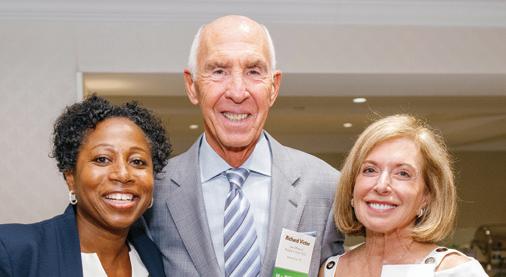

ByChristopherS.PattersonandThamaraE.Sordo-Vieira 21 DEPARTMENTS

Municipal law relies on zoning regulations, building codes, permits, and other tools to create safe, healthy communities. Similarly, personal boundaries serve as an internal infrastructure to support and promote a healthy, balanced life. Just as zoning laws are designed to separate incompatible uses, boundaries help us create clear distinctions between different parts of our life. Without these boundaries, just like in a poorly zoned city, areas of our life can bleed into one another, creating conflict, resentment, and imbalance. Building codes ensure that structures are safe, stable, and built to withstand stress before they can be inhabited. Similarly, we need to make sure our commitments are well constructed, that we have the time, energy, and resources to support them, before we take them on. Without that foundation, even well-intentioned commitments can collapse under pressure. Permits, too, require thoughtful review and approval before new construction begins. In the same way, it is imperative that we give our life thoughtful review and grant approval to rest, to say no, or to step back. Just as municipal systems prevent unsafe or chaotic development, boundaries protect us from overextension and create the conditions for well-being, clarity, and sustainable growth.
For many in the legal profession, setting healthy boundaries does not come naturally. We’re trained to be problem-solvers and protectors, to lean in, say yes, and run toward the fire. The idea of saying no can feel selfish or disloyal. But healthy boundaries are not about turning people away. They are about honoring our needs so we can show up with clarity, intention, and authenticity. Boundaries are essential to protecting our emotional, mental, and physical well-being. Without clear limits, we risk burnout, resentment, emotional fatigue, and disconnection from others and ourselves.
Healthy boundaries begin with self-awareness. By checking in with our capacity each day, we are more likely to respond to life instead of reacting
By Sarah E. Kuchon
to it. Capacity refers to the mental, emotional, and physical energy we have available on any given day. It fluctuates based on sleep, stress, health, workload, and life events. Recognizing our daily capacity allows us to adjust expectations of ourselves and others. Some days, we operate at full strength. Other days, we may need to rest, reset, or retreat. Honoring that rhythm is not a sign of weakness. It’s a sign of wisdom. Every so often, we need to walk our mental perimeter, asking ourselves: Are we overextending? Are we ignoring warning signs? Are we letting things in that don’t support our well-being?
The demands of the profession often make it difficult to retreat, disconnect, or say no. Lawyers feel the pressure to be constantly available to clients and employers. But just as permits ensure safe development, giving yourself permission supports sustainable living. Boundaries may look different for everyone: turning off email after 7 p.m., saying no to a nonessential meeting, or
finally using vacation time. Sometimes, it’s as simple as asking, “What do I need right now?” Healthy boundaries do not make you less available. They make you sustainably available. By clearly communicating your limits, you increase trust and reliability. People know what to expect from you and what not to.
Setting personal boundaries is like enforcing zoning laws. You decide what belongs where. Just as cities don’t allow factories in residential zones, we should not allow constant work demands in spaces meant for rest or connection.
Boundary encroachments often happen slowly. It starts with one late-night email. Then a weekend call. An “urgent” request that can’t wait until morning. Over time, we stop recognizing the edges of our own well-being. We justify it: It’s just this once. I’m being helpful. This is what commitment looks like. But these small concessions compound and quietly drain us.
Boundaries are essential to protecting our emotional, mental, and physical well-being. Without clear limits, we risk burnout, resentment, emotional fatigue, and disconnection from others and ourselves.
Without enforcement, boundaries crumble. In the same way that we’d advise a client not to let a neighbor slowly annex their yard, we must learn to protect our time and energy. Saying yes when we want to say no or ignoring our gut to avoid discomfort leads to resentment and burnout. What could have been solved with a simple conversation can escalate into frustration, or even conflict.
Many people worry that setting boundaries will make them seem inflexible, unhelpful, or even selfish. However, exhaustion is not a badge of honor. It is depletion, not dedication. A clearly communicated boundary is a form of respect, both for ourselves and for others. It creates predictability, reduces misunderstandings, and helps prevent resentment from building over time. Boundaries are not about being rigid. ey are about being honest and clear about what you can offer, what you’re willing to take on, and where your limits lie. ey define where your work ends and your personal life begins, making space for both to exist in a healthier balance. Ask yourself: Are you clear with clients, colleagues, and loved ones about your availability and capacity?
It is not enough to declare a boundary. You must also enforce it. at means not answering the phone after hours, even when we have the urge to do so. Consistency builds credibility. When others see you respecting your own limits, they are more likely to respect them, too. Boundaries are not about being unavailable. ey are about being present in a sustainable way. Boundaries are what help us stay grounded, responsive, and effective over the long term without burning out.
In the legal world, we bring in surveyors to mark property boundaries with precision. In our personal and professional lives, we may need help doing the same. Sometimes it’s difficult to see where our limits should be, especially when we’re overwhelmed, emotionally invested, or stuck in long-standing patterns. Support can come from therapy, mentorship, peer groups, or simply honest self-reflection. Just as we trust professionals to assess and define property lines, we can benefit from an outside perspective when our own boundaries feel blurred or uncertain. ere is no shame in seeking help. In fact, it’s often a sign of strength and self-awareness. Early intervention, as in legal disputes, can prevent escalation, helping us avoid emotional overload before it turns into burnout or resentment. Identifying and reinforcing our boundaries can lead to healthier relationships, clearer communication, and a stronger sense of self.
Boundary work, like legal work, is never really done. With strong boundaries, we become better lawyers, colleagues, friends, and humans. We operate with more clarity and less resentment. However, boundaries must evolve. Needs change based on health, family demands, or life transitions. What felt manageable last month may feel overwhelming today. Adjusting is not failure; it’s growth. e best lawyers are not just zealous advocates. ey are thoughtful, self-aware professionals who know when to step up and when to step back. e next time you’re pulled in too many directions, pause and check your internal property lines. Are they where they need to be? Before you say yes to one more thing, take a breath. Listen to your body, your mind, your instincts. en honor that wisdom.

Sarah E. Kuchon is the president of the Oakland County Bar Association.

By Jennifer Quick

On June 4, members of the Oakland County Bar Association board of directors; the Oakland County Bar Foundation board of trustees; and the Diversity, Equity and Inclusion (DE&I) Committee’s scholarship subcommittee presented checks to the 2025 recipients of the Diversity in the Legal Profession Scholarship. Lily Kawahata from Novi High School and Jackson Otlewski from the International Academy in Bloomfield Hills were each awarded $5,000.
Committed to promoting diversity in the legal profession, the OCBA and OCBF partnered to establish the scholarship fund in 2023. Funding for the scholarship mainly comes from OCBA members who add a $10 donation to the fund when they join or renew their membership. In its first year, the fund grew to over $14,000, allowing the OCBA and OCBF to award two $5,000 scholarships in 2024.
The scholarships are awarded to high school seniors in Oakland County who plan to pursue a career in the legal profession. Considerations include family financial need, student academic performance, career goals, and extracurricular activities.
The number of scholarships and the amount awarded each year are determined by the funds raised through OCBA member contributions from the previous year. During the 2024-25 bar year, OCBA member donations totaled nearly $15,000, and we were once again able to award a total of $10,000.
Each year, the scholarship honors an OCBA member who has worked toward increasing diversity in the legal profession. For 2025, the DE&I Committee selected Laurel McGiffert. Laurel served as the first director of diversity, equity, and inclusion at Plunkett Cooney and passed away unexpectedly in January 2024. Before joining Plunkett Cooney, she worked for nearly 40 years as one of Michigan’s most accomplished medical liability and governmental law attorneys after first starting her law career with the city of Detroit’s Law Department.
Laurel joined Plunkett Cooney in 1989. She was named a partner just two years later in 1991,
the first African American woman at Plunkett Cooney to achieve this milestone.
Twenty scholarship applications were received from students throughout Oakland County — all of whom were exceptional. Members of the DE&I scholarship subcommittee reviewed each application and scored each one based on a rubric that they developed. The pool was narrowed down to seven applicants, who were then interviewed by committee members. From there, the committee narrowed it down to the two winners, an incredibly challenging task.
As part of the scholarship application, applicants were asked to write a brief essay on why they wish to practice law. Here are the responses of our two recipients.
“In 2011, I made my first snow angel — unwittingly in snow contaminated by Fukushima. As aftershocks rocked our house, my father found my mother and me the last tickets on a flight out. I was displaced — like millions of climate refugees are — though American grandparents waited at the end of my flight, not government agents. The meltdown taught me that laws and lawmakers are key to ensuring human safety. Likewise, poor policymaking will leave my Florida hometown underwater before I turn 50, and climate change threatens Michigan’s environment. I decided it is my responsibility to combat the climate crisis by becoming an environmental lawyer.
I’ve prepared for my future law career by founding a mock trial club in sophomore year, spending four years in debate and Model UN, and interning with the Michigan League of Conservation Voters, where, through direct community involvement, I promoted candidates and policies safeguarding Michigan’s environment, democracy, and public health. As an Our Water Activist, I discussed climate justice with legislators across Michigan. I assisted with accountability, electoral, and public education campaigns and communicated how environmental issues disproportionately affect
low-income and BIPOC communities. Phone banking, canvassing, and recruiting volunteers at events like Ann Arbor Pride allowed me to extend my influence statewide. My hard work earned me the Youth Advocate Award and a full-time job offer. My direct experience with Fukushima, climate change, and my environmental internship have made me passionate about law. The Diversity in the Legal Field Scholarship would provide me with the resources to realize my aspirations.”
Lily Kawahata, Novi High School (originally from Tokyo)
Attending Georgetown University in the fall
“Learning to advocate for what I want is an occupational hazard of growing up in a household with two attorneys. When I was 3, my mom jokingly said she was not paying for me to go to law school because she was tired of losing arguments to me. Passionate advocacy is important because not everyone has the resources to speak up for themselves. Studying the law will allow me to help people, have a voice in the government, and use the legal system to make a positive impact on my community.
Attending city council meetings in my town helps me to learn how the government works and all the research necessary before making a decision on a contested issue. I have also observed citizens who come before the board to raise concerns and the importance of listening to both sides carefully and remaining impartial until all the facts are known. There are many issues facing our country and the planet today. Good lawyers will help people navigate these challenges and protect their rights. Hav-ing a voice in the government will also be important as laws change to respond to new developments, such as AI, and environmental disasters. Studying the law also requires an appreciation of history, which is my intended major, and an ability to work on behalf of the
community, which I have done for the past four years as part of the Rochester Hills Government Youth Council. During my career internship, I observed court sessions in the Oakland County Probate Court and realized how important these cases were to the people who brought them. It motivated me to speak on behalf of people who cannot speak for themselves.”
—Jackson Otlewski, International Academy of Bloomfield Hills
Attending Carnegie Mellon University in the fall
During the check presentation, Lily, Jackson, and their parents expressed their heartfelt appreciation for the financial support and the significant impact it will have on their pursuit of a degree. ey extended their gratitude to everyone who contributed to the fund.
We at the OCBA and OCBF also thank you. As you can see, that simple $10 donation will make a significant difference for these two students. In addition to thanking the fund donors, I want to express my gratitude to the DE&I scholarship subcommittee members and the two OCBA staff members, Katie Tillinger and Lori Dec, who worked diligently to get the word out to schools and coordinate the entire scholarship selection process. e
subcommittee members comprised the Hon. Kwamé Rowe, Lanita Carter, Tiffani Palmer, Donna Pearson, and Kristina Bilowus.
Please Give: e $10 contribution option remains available when an OCBA member joins or renews. Please consider checking that box. You may also mail a check made payable to the Oakland County Bar Foundation at 1760 S. Telegraph Road, Suite 100, Bloomfield Hills, MI 48302. Please be sure to designate it to the scholarship fund.
Spread the Word: While we send scholarship information to the counseling departments of all high schools in Oakland County, not all of them promote it to their students. If you have a relationship with a local high school or know a student who meets the criteria, please share the information with them. e application can be found at ocba.org/ DEIscholarship
Volunteer at the Youth Law Conference: Currently, the OCBA is seeking 20 to 30 newer attorneys to share their experience of the pathway they took to get into law school with area high school students during this year’s Youth Law Conference on November 18, 2025, in Troy. If you are interested in volunteering or learning more, please reach out to me at jquick@ocba.org.
















Please Note: Dates listed below were sent to the publisher on June 30, 2025. It is possible that some of the events listed below have since been altered. Please check ocba.org/events for the most up-to-date schedule of events.
Want to get more out of your OCBA membership? Hoping to expand your professional network? Then join us at 8:45 a.m. at the OCBA, and our staff will show you how to get the most value for your money and how your membership can help you grow professionally. Plus, we leave plenty of time to meet and network with your fellow members. RSVP at ocba.org/events.
Join us for an engaging seminar exploring the vital role attorneys play in defending the rule of law in today’s complex legal and political landscape. Featuring distinguished speakers Daniel D. Quick, former president of both the Oakland County Bar Association and the State Bar of Michigan, and Barbara L. McQuade, former U.S. attorney and legal analyst, the program will delve into the ethical and civic responsibilities of lawyers as guardians of justice. Attendees will also have the opportunity to hear from Ms. McQuade about her acclaimed book, Attack from Within, with copies available for purchase and a book signing to follow. Register at ocba.org/events
OCBA Sustaining Members are cordially invited to this special event to honor and show appreciation for the dedication and commitment of our Sustaining Member supporters. This reception is invitation only and free to Sustaining Members. To learn more about the Sustaining Member program, visit ocba.org/ sustaining or contact Katie Tillinger at ktillinger@ocba.org
Join colleagues and members of the OCBA and local affinity bars for the biennial Taste of Diversity cocktail reception — a celebration of the rich diversity and multiculturalism within our legal community. Enjoy an evening of festive camaraderie, delicious hors d’oeuvres, and meaningful recognition.
The event will also feature the presentation of the Leon Hubbard Community Service Award and the Michael K. Lee Memorial Award, honoring individuals who have made outstanding contributions to advancing diversity in the legal profession. Don’t miss this inspiring and lively evening — register today at ocba.org/2025diversity
Our bench/bar brown-bag luncheon series continues virtually via Zoom and will feature Hon. Edward Ewell Jr. and Hon. Kathleen M. McCarthy from the Civil Division of the Third Judicial Circuit Court. They will share tips and preferred protocols for practicing in Wayne County. Bring your questions and join us for an informal discussion of legal topics and practice issues. Space is limited, so register today at ocba.org/events


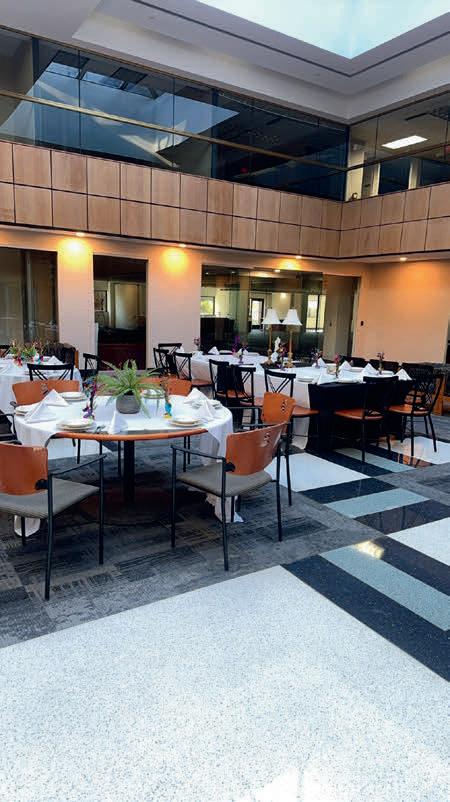



9 Ethics II: Avoiding Bar Complaints and Attorney Discipline (5:30 – 7 p.m.)
A seminar from the Professional Development Committee
Presenter: Professor Martha D. Moore, Esq., Cooley Law School
Join us for part two of the Ethics series! This in-person seminar offers advice and tips to avoid complaints and discipline issues. Ideal for legal professionals seeking to better understand the system, the session aims to promote ethical practice and awareness of professional responsibility requirements in Michigan.
11 Interlocutory Appeals for Trial Lawyers (Noon – 1 p.m.)
A seminar for criminal defense appointed counsel
Presenter: Kathy Swedlow, Esq., State Appellate Defender Office
Are you stymied or intimidated by the prospect of filing interlocutory appeal? This Zoom training is for you! In this training, attendees will receive an overview of interlocutory appeals, learn about deadline and filing requirements, and get necessary information to help advise clients. We will cover appeals from the district courts to the circuit courts and appeals from the circuit courts to the Court of Appeals.
Worth 1 hour of criminal and juvenile training credit for appointed counsel
17 The Rule of Law in Practice: Lawyers’ Role in Preserving the Rule of Law (5:30 – 7:30 p.m.)
A seminar from the Professional Development Committee
Presenters: Barbara L. McQuade, Esq., University of Michigan Law School, and Daniel D. Quick, Esq., Dickinson
Wright PLLC
Join us for an engaging seminar exploring the vital role attorneys play in defending the rule of law in today’s complex legal and political landscape. Featuring distinguished speakers Daniel D. Quick, former president of both the Oakland County Bar Association and the State Bar of Michigan, and Barbara L. McQuade, former U.S. attorney and legal analyst, the program will delve into the ethical and civic responsibilities of lawyers as guardians of justice. Attendees will also have the opportunity to hear from Ms. McQuade about her acclaimed book, Attack from Within, with copies available for purchase and a book signing to follow. Register at ocba.org/events
9 Update on the State of Juvenile Law 2025 (11:30 a.m. – 1 p.m.)
A seminar for criminal defense appointed counsel
Presenter: H. Elliot Parnes, Esq., H. Elliot Parnes, PLLC
This Zoom seminar will provide an annual review of developments in juvenile law, including new legislation, court rules, and case law from the past year. A Q&A session will follow the presentation.
Worth 1.5 hours of criminal and juvenile training credit for appointed counsel
14 Domestic Violence Cases — Confrontation Clause (Noon – 1 p.m.)
A seminar for criminal defense appointed counsel
Presenters: Tanya A. Grillo, Esq., Grillo Law, PLLC, and Jennifer (Jen) C. Smith, Esq., Brimstone Law, PLLC Join us during National Domestic Violence Awareness Month! This virtual seminar offers a concise and informative overview of the confrontation clause. In the context of domestic violence cases in Michigan, the confrontation clause of the Sixth Amendment of the U.S. Constitution plays a crucial role in ensuring a defendant’s right to confront their accuser in a criminal trial. This right, established in Crawford v. Washington, limits the admissibility of out-of-court “testimonial” statements against a defendant, meaning such statements are generally inadmissible unless the declarant is unavailable to testify and the defendant had a prior opportunity for cross-examination. Worth 1 hour of criminal and juvenile training credit for appointed counsel
21 The Life Cycle of a Law Firm: Launch, Lead, and Leave a Legacy (Noon – 1 p.m.)
A seminar from the Professional Development Committee
Presenters: Jessica Fleetham, Esq., Evia Law PLC; Joseph Doerr, Esq., Doerr MacWilliams Howard PLLC; and Gerald E. McGlynn III, Esq., Howard & Howard Attorneys PLLC
Moderator: Steven Susser, Esq., Evia Law PLC
This Zoom seminar will provide an overview of the life cycle of owning and managing a law firm. Your legal career will go through many different transitions — come get some tips and advice on managing your practice, from launching, maintaining, and growing a law firm to succession planning and exit strategies. You don’t want to miss this!






•
•
•
•














Wachler & Associates represents healthcare providers, suppliers, and other entities and individuals in Michigan and nationwide in all areas of health law including, but not limited to:
•Healthcare Corporate and Transactional Matters, including Contracts, Corporate For mation, Mergers, Sales/Acquisitions, and Joint Ventures
•Healthcare Corporate and Transactional Matters, including Contracts, Corporate For mation, Mergers, Sales/Acquisitions, and Joint Ventures
•Medicare, Medicaid, and Other Third-Party Payor Audits and Claim Denials
•Medicare, Medicaid, and Other Third-Party Payor Audits and Claim Denials
•Licensure, Staff Privilege, and Credentialing Matters
•Provider Contracts
•Licensure, Staff Privilege, and Credentialing Matters
•Billing and Reimbursement Issues
•Provider Contracts
•Billing and Reimbursement Issues
•Stark Law, Anti-Kickback Statute (AKS), and Fraud & Abuse Law Compliance
•Physician and Physician Group Issues
•Stark Law, Anti-Kickback Statute (AKS), and Fraud & Abuse Law Compliance
•Physician and Physician Group Issues
• Regulatory Compliance
•Corporate Practice of Medicine Issues
• Regulatory Compliance
•Corporate Practice of Medicine Issues
•Provider Participation/Ter mination Matters
•Provider Participation/Ter mination Matters
• Healthcare Litigation
• Healthcare Investigations
• Healthcare Litigation
•Civil and Criminal Healthcare Fraud
• Healthcare Investigations
•Civil and Criminal Healthcare Fraud
•Medicare and Medicaid Suspensions, Revocations, and Exclusions
•Medicare and Medicaid Suspensions, Revocations, and Exclusions
•HIPAA, HITECH, 42 CFR Part 2, and Other Privacy Law Compliance
•HIPAA, HITECH, 42 CFR Part 2, and Other Privacy Law Compliance




By Gerald A. Fisher
Enacting and administering a zoning ordinance is one of the most widely recognized powers exercised by local government. In the early 1900s, zoning power did not yet exist. Land use control by the government was essentially exercised by the courts in the enforcement of private deed restrictions and in declaring nuisances on a case-by-case basis. Since those pre-zoning days, planning and zoning have come a long way. It is the thesis of this article that land use development has become increasingly flexible and effective over the past 100 years. Permitting and applying planning principles and conditions has conferred greater discretion to improve the end products of the exercise of zoning authority.
This article will look at the progression of zoning over the years, as it moved from the inflexibility of single-use zoning districts to significantly greater flexibility in land use authorization, and shine a light on one of the latest substantive innovations in the Michigan Zoning Enabling Act (MZEA),1 known as “conditional rezoning,” along with a 2024 decision of the Michigan Supreme Court interpreting that new innovation.
Before diving headlong into a discussion of positive aspects of zoning, it is appropriate to address the argument made by some who question whether the zoning power is inherently flawed. There is certainly no assertion here that the exercise of “zoning” has always produced perfect results. However, it is contended that any problems resulting from the zoning exercise must be separated from the zoning power itself. This power is exercised by local elected and appointed officials who must labor within the environment of the societal pressures that have in some cases influenced the manner in which zoning has been exercised. In other words, the zoning power is no different from any other state and federal authority exercised by human beings over the last century. But there is strong evidence that, from the outset, the marshaling of planning and zoning principles in the early 1900s opened the door to organizing major urban areas overrun by the industrial revolution and to making life safer and healthier. Over time, zoning has facilitated the functional and aesthetic improvement of many communities.
It is easy to forget that the entire first half of the 20th century witnessed discriminatory private
deed restrictions, racially discriminatory federal court rulings, and in some cases legislation and other adverse factors that contributed to housing discrimination and unfair treatment of individuals and groups. For example, between 1896 and 1954, the frequently ignored doctrine of “separate but equal” prevailed throughout the country under the Supreme Court’s determination in Plessy v. Ferguson, which upheld the constitutionality of a Louisiana law requiring separate accommodations in railroad coaches for white and Black people.2 The blame for problems emanating from several harmful factors simply cannot be laid at the doorstep of the zoning power itself.
Many of the most insidious adverse factors have been addressed: Unconstitutional private deed restrictions have been invalidated,3 the “separate but equal” doctrine has been overruled,4 and the federal Fair Housing Act5 has been enacted and is being meaningfully enforced, among other positive steps.
Zoning, now a universally recognized local government power in the United States, began its existence in a form which can be characterized, in a word, as “inflexible.” The rigid form grew out of the application of single-use zoning districts.
The Village of Euclid, Ohio, was a bedroom community adjacent to Cleveland. Village planners read the tea leaves in the early 1920s and determined with little doubt that the trend of commercial and industrial development in Cleveland was moving directly toward Euclid. These planners desired to take action to stop the trend from overwhelming the quiet residential character of the village. Thus, the new zoning power was

mobilized, and a zoning ordinance was enacted that divided the community into an inflexible set of use districts, predominantly seeking to protect the residential living environment from what the village considered to be the adverse threat of commercial and industrial domination. The village zoning ordinance unwaveringly prohibited commercial and industrial uses from encroaching into single-family areas perceived as being important to the character and life of the village.
Ambler Realty had read the same tea leaves on the trend of development and made a speculative investment in village property, acquiring land located directly on the path of anticipated industrial development. If you place yourself into the shoes of a pre-zoning land developer, such as Ambler Realty Co. in the early 1920s, you would have been astonished that this new zoning power could possibly be enforced to restrict development of your private property. After all, prior to “zoning,” land would be developable for nearly any purpose unless its use would create a violation of deed restrictions or would constitute a nuisance in relation to surrounding properties. In other words, the application of “zoning” regulations would have resulted in a rude awakening if upheld by the courts.
Ambler Realty brought a constitutional challenge to the validity of the village’s exercise of zoning power, ultimately leading to the 1926 landmark U.S. Supreme Court case Village of Euclid, Ohio v. Ambler Realty Co. 6 The court was confronted with the question of whether the village’s exercise of this new zoning authority, which included enacting an inflexible set of regulations, could be squared with the Constitution. The court in Village of Euclid evaluated the perceived rational basis issue implicit in the zoning concept:
“The matter of zoning has received much attention at the hands of commissions and experts, and the results of their investigations have been set forth in comprehensive reports. These reports, which bear every evidence of painstaking consideration, concur in the view that the segregation of residential, business, and industrial buildings will make it easier to provide fire apparatus suitable for the character and intensity of the development in each section; that it will increase the safety and security of home life; greatly tend to prevent street accidents, especially to children, by reducing the traffic and resulting confusion in residential sections; decrease noise and other conditions which produce or intensify nervous disorders; preserve a more favorable environment in which to rear children. … If these reasons, thus summarized, do not demonstrate the wisdom or sound policy in all respects of those restrictions which we have indicated as pertinent to the inquiry,
at least the reasons are sufficiently cogent to preclude us from saying, as it must be said before the ordinance can be declared unconstitutional, that such provisions are clearly arbitrary and unreasonable, having no substantial relation to the public health, safety, morals, or general welfare.”7
Considering this analysis, the Supreme Court conferred its constitutional blessing upon the exercise of the zoning power in 1926.
In the course of time, the rigid separation of uses within “single-use zoning districts” characteristic of early zoning took a practical, more flexible turn. Inflexibility gave way to gradations of land uses when it was recognized that this new regime would not jeopardize public health and safety. By applying planning principles, including conditions on development and use, adverse effects could be avoided and compatibility achieved.
Going beyond the single-use zoning district can be illustrated for commercial zoning as follows: Gradations in “commercial” uses can be achieved by creating classifications and conditions on the size, intensity, and purpose of use. One classification of commercial uses can be authorized to serve local neighborhoods, and at the other extreme, a commercial classification can be formulated to serve a much larger size and intensity of market — for example, an entire region. Thus, with varying conditions, commercial development can be planned for neighborhood offices and stores, and by adjusting the applicable conditions, commercial uses can be calibrated to permit regional shopping centers. Similarly, although the argument was rejected in Michigan until the 1980s, it gradually became legally accepted that conditions can be imposed for the sole purpose of achieving “aesthetic” objectives,8 thus furthering the potential for gradations and compatibility.
The movement away from the single-use zoning district and toward gradations of zoning classifications allowed property owners to react in a more meaningful way to demands in the marketplace.
The natural outgrowth of moving beyond the single-use zoning district, and recognizing the potential for achieving compatibility between and among a variety of uses, fostered the expansion of zoning classifications to include both “permitted uses” and “special land uses.” Assuming that a property met rudimentary requirements, such as minimum area and dimensions, a property owner would be entitled as a matter of right to improve

property for a principal permitted use; this would be the case, for example, for the construction of a single-family detached home in a residential zoning district. Most zoning classifications will also permit special land uses, which may be developed only if the property owner is able to demonstrate that a set of discretionary conditions can be met. For example, in a residential zoning district, there may be a special land use authorization for cluster residential units, perhaps allowing three or four homes to be clustered together, or even connected, rather than requiring each residential unit to be constructed within its own freestanding sphere. The local government must exercise discretion in determining whether a particular special land use should be granted, making a judgment of compatibility taking into consideration such things as harmony in scale and architecture, aesthetics, and the availability of government services in the area. In many instances, a cluster development project will be permitted if it will result in the preservation of natural resources, such as tree stands, wetlands, or simply open space.
The utilization of planning principles to achieve compatibility between land uses was carried to an even higher level of flexibility with the creation of “planned unit developments.” The Michigan Zoning Enabling Act recites the intent of this new tool as follows:
“The legislative body [of the local communi-
ty] may establish planned unit development requirements in a zoning ordinance that permit flexibility in the regulation of land development, encourage innovation in land use and variety in design, layout, and type of structures constructed, achieve economy and efficiency in the use of land, natural resources, energy, and the provision of public services and utilities, encourage useful open space, and provide better housing, employment, and shopping opportunities particularly suited to the needs of the residents of this state. The review and approval of planned unit developments shall be by the zoning commission, an individual charged with administration of the zoning ordinance, or the legislative body, as specified in the zoning ordinance.”9
The planned unit development authorization even permits a “mixing” of single-family residential, multifamily residential, and in some cases commercial uses, all within a single development, “if equitable procedures recognizing due process principles and avoiding arbitrary decisions are followed in making regulatory decisions.”10 The planned unit development “tool” would customarily contain even more approval conditions, tailored to the particular development, in order to ensure both internal and external compatibility as well as consistency with the availability of government facilities and services.

Attributed to Charles Duell, commissioner of the U.S. Patent Office from 1898 to 1901, one of the great quotes in history is “Everything that can be invented has been invented.” In reality, human potential is virtually limitless. One example of this potential is found in the relatively recent innovation in zoning law which permits the application of planning principles and conditions.
A hypothetical will be helpful to set the table for the presentation of this newer zoning tool: Assume the time is pre-2004, and a property owner has submitted an application to rezone property to an Office-2 District, in which both one- and two-story offices are permitted. Because the property is on the boundary of a residential district, the community would strongly prefer a one-story office in order to provide a better transition to the uses within the residential district. After discussions with the community, the property owner spells out in the application the intent to construct a one-story office building. The question to consider is: If the property is rezoned to the Office-2 classification, will the local government be entitled to rely on the statement in the application that a one-story office will be developed and actually have the right to prohibit the construction of a two-story office? Or would the property owner, or the owner’s transferee, be free to construct either a one- or two-story office once the property is rezoned, considering that the legislatively enacted zoning district technically permits both uses? Pre-2004, there was no express authority in either the Michigan Zoning Enabling Act or case law that would provide the basis for a sufficiently clear answer. Thus, there was no reliable basis for predicting whether the proposed two-story development could be prevented.
Seasoned municipal attorneys would generally counsel their local government clients to take a conservative approach, explaining that an enacted rezoning may well entitle a property owner to
all uses permitted in the zoning classification, regardless of any statement that may have been included in the rezoning application. Of course, this circumstance proved frustrating in many instances, particularly where the property owner, local residents, and local government officials were all in full agreement that, if the development could be restricted to a use promised in a rezoning application, allowing the zoning change would be in the public interest.
In 2004, a stab at a new conditional zoning tool was cobbled together and submitted to the Michigan Legislature to address this frustration. This new tool promised to provide the added flexibility of allowing the property owner to offer binding and enforceable conditions as part of a rezoning. The name of this tool is “conditional rezoning,” now codified as MCL 125.3405 within the MZEA.
Unlike nearly all earlier authorizations for the imposition of conditions, under conditional rezoning, as specified in MCL 125.3405, the property owner is the exclusive author of the conditions to be offered and enforced as integral part of a proposed rezoning. The local government is given the last word in the sense that it may either grant or deny the rezoning accompanied by the property owner’s proposed conditions. In other words, the offer made for a conditional rezoning is an “all-or-nothing” bet by the property owner — the government is not permitted to grant the rezoning with new or altered conditions.
As suggested, the language that became MCL 125.3405 was cobbled together without broad dialogue among all stakeholders. For example, the statute does not expressly authorize a local government to require a development agreement which would document the conditions on the development and use of the property for purposes of providing a clear reference of the terms of the rezoning. Nor is there a requirement to record an instrument with the register of deeds spelling out the details of the rezoning — obviously relevant to surrounding property owners. Such shortcomings could easily be remedied with
a short amendment of MCL 125.3405. Of critical importance, there is no specification in the statute that the proposed conditional rezoning is limited to a land use which is actually permitted in the zoning district to which the property is to be rezoned. Absent such a specification, a property owner would be free simply to “shoot the moon”11 in a gamble that the local government might just approve an entirely new use which is not otherwise permitted in the new zoning district. This omission in the statute was recently tested in the Michigan Supreme Court in Jostock v. Mayfield Township 12
In Jostock, the property in the case had been utilized for motor vehicle “dragway” purposes since 1968; this use was allowed for only a few hours a day two days a week, plus some holidays. Five years after the dragway use was commenced, the township adopted its current zoning ordinance, designating the property as R-1 (Residential Agricultural District). Dragway use was not included as a principal permitted use in the R-1 zoning district. Thus, dragway became a lawful nonconforming use, which generally means that the use may be continued (as previously established) but may not be expanded.13
In 2021, the property owner filed with the township a conditional rezoning application under MCL 125.3405, seeking to have the property rezoned to C-2 (General Commercial District), with the condition that the dragway could be used for track rental, vehicle testing, and organized racing, with limited hours and operations.
The township’s planning commission, after holding a public hearing, recommended that the township board approve the proposal. The board conducted another public hearing and then voted to approve the conditional rezoning to C-2, subject to the offered condition.
An important focus in the Supreme Court became whether the new dragway use authorization was a permitted use under the C-2 zoning ordinance classification to which the property had been rezoned. Amicus curiae briefs were filed in the Supreme Court on behalf of the Real Property Law Section of the State Bar of Michigan, the Michigan Townships Association, the Michigan Association of Planning, the Michigan Municipal League, and the Government Law Section of the State Bar of Michigan. The court, in a unanimous determination, held as follows: “We agree with all of the amici in this case that, in order to be valid under MCL 125.3405(1), the proposed use must be a permitted use within the proposed zoning district—either by right or after special approval.”
The function and flexibility of the zoning power have come a long way since the 1920s, when the Supreme Court gave this power its official impri-
matur in its decision in Village of Euclid v. Ambler Realty Co. What began as an inflexible, single-use zoning district regime, primarily focused on protecting single-family residential neighborhoods, slowly evolved to encompass the recognition that residential, commercial, and industrial uses had gradations of impact, depending on the substance of the respective use rather than the broader name given to the use. is recognition of new possibilities arose, at least in part, out of the application of planning principles and conditions used to temper land use impacts and intensities.
e application of planning principles and the imposition of conditions were carried to another level with the authorization in MZEA of special land uses and planned unit developments, in which the use of planning principles and conditions has become critical.
e evolution of flexible zoning has now expanded to include “conditional zoning,” a regulatory tool that might be considered to be in its experimental stage. is is a very viable approach to achieving flexible land use authorization, but with a new adaptation on the use of conditions: e conditions must originate from the property owner, with the local government having the final approval authority — but not having the
power to alter or expand the conditions. is approach has the potential for creating unique developments demanded in the market on particular properties. A few legislative “fixes” for conditional rezoning have been identified. is new conditional zoning tool is underused, and it is suggested that usership would rise if these legislative clarifications were enacted.

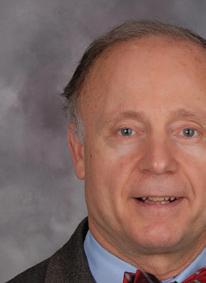


Gerald Fisher has served as general counsel for cities, villages, and townships and currently practices as Fisher Consulting. He is a member and past chair of the State Bar of Michigan’s Government Law Section, co-founder and rst chair of the OCBA Municipal Law Committee, and member and past president of the OCBF board of trustees. He is the author of Local Government Law: A Practical Guidebook and co-author of Institute of Continuing Legal Education books on municipal law and zoning and planning law.
Footnotes:
1. MCL 125.3101, et seq
2. 163 U.S. 537 (1896).
3. See Shelley v. Kraemer, 334 U.S. 1 (1948).
4. Brown v. Board of Education, 347 U.S. 483 (1954).
5. 42 U.S. Code § 3601, et seq
6. 272 U.S. 365, 47 S.Ct. 114, 54 A.L.R. 1016, 71 L.Ed. 303 (1926).
7. Id. at 394-395.
8. One of the earliest Michigan cases that held that aesthetics alone was a sufficient basis for regulation was Gannett Outdoor Co. of Michigan v. City of Troy, 156 Mich.App. 126, 409 N.W.2d 719 (1986).
9. MCL 125.3503(2).
10. MCL 125.3503(3).
11. “Shoot the moon” is a reference to a gamble or risky maneuver in a card game that will result in the “shooter” either winning big or losing big.
12. 513 Mich. 360, 15 N.W.3d 552 (2024).
13. MCL 125.3208(1) and (4): “If the use of a dwelling, building, or structure or of the land is lawful at the time of enactment of a zoning ordinance or an amendment to a zoning ordinance, then that use may be continued although the use does not conform to the zoning ordinance or amendment.” However, “The elimination of the nonconforming uses and structures in a zoning district is declared to be for a public purpose and for a public use.”
•
Separation
Drafting
HR
Serious












By Kaitlyn Elias and Michael Vogt
On November 28, 2023, Gov. Gretchen Whitmer signed House Bill 5120 (Public Act 233 of 2023), which created a new statutory siting process through the Michigan Public Service Commission (MPSC) for utility-scale wind, solar, and energy storage facilities.1 Prior to the law becoming effective in November 2024, all renewable energy projects had to go through the local zoning and land use approval process — typically, special land use and site plan approval. With the enactment of PA 233, under certain circumstances, electric providers and independent power producers can now seek a siting certificate from the MPSC authorizing construction and operation of a renewable energy project. The MPSC application requirements are extensive and necessitate significantly more preparation than what is required under a typical zoning ordinance — even when compared to ordinances with regulations specific to wind, solar, or battery storage. The new MPSC process takes the form of a contested case conducted under the Administrative Procedures Act (Act 306 of 1969, MCL 24.201, et seq.), which can take up to 14 months to complete from the time an applicant files an application. Interested parties, including the municipality that is hosting the project, may intervene and participate in the contested case proceeding.
In order to implement the new siting process created by PA 233, the MPSC issued an order on October 10, 2024, which formally adopted application filing instructions and procedures to guide developers and municipalities in the application process. Pursuant to PA 233 and the MPSC order, a developer may seek MPSC certification in the following circumstances: (1) when a municipality requests that the MPSC require a developer to file an application for an MPSC certificate; (2) when a municipality does not have a compatible renewable energy ordinance (CREO)2; (3) when a municipality claims to have a CREO but fails to approve or deny the developer’s zoning application within 120 days (unless the parties agree to an extension); (4) when a municipality denies an application that complies with the requirements of Section 226(8) of PA 233; or (5) when a municipality amends its zoning ordinance after providing notice that it has a CREO and the amendment imposes development terms that are more restrictive than those in Section 226(8) of PA 233.
The MPSC order was appealed by 72 townships and seven counties, and that case remains pending in the Michigan Court of Appeals under Case No. 373259, Almer Charter Township, et al. v. Michigan Public Service Commission, et al. The appeal seeks to vacate the MPSC order and also challenges the definition of certain terms and phrases from PA 233, including “compatible renewable energy ordinance” and “affected local unit.” The appellants initially moved for a preliminary injunction to stay the MPSC order and implementation of the MPSC certification process, but that request was denied by the Court of Appeals on January 14, 2025. In the same order denying the preliminary injunction, the court granted intervention to the Michigan Energy Innovation Business Council, the Institute for Energy Innovation, Clean Grid Alliance, and Advanced Energy United. Since the injunction was denied, the issues have been fully briefed by the parties, as well as by multiple amicus curiae parties, including the Michigan Farm Bureau, the Michigan House of Representatives, the Michigan Townships Association, the Michigan Association of Counties, the Michigan Environmental Council, the Natural Resources Defense Council, the Sierra Club, Evergreen Action, the Michigan Conservative Energy Forum, and the Sabin Center for Climate Change Law. Briefing on the issues concluded in April 2025. As of the date of this writing (July 12, 2025), the court has not issued a decision and it is unknown when a decision will be issued.
With the Court of Appeals declining to issue a stay of the MPSC order — allowing the new MPSC certificate process to move forward — MPSC staff is coordinating with developers and just recently received the first application for MPSC certification (on June 18). As of the date of this writing, this first application is the only application that has been submitted and the MPSC has not yet deemed it complete, a benchmark that starts the 365-day period for the MPSC to make a final decision on an application. e application filed is for a certificate to construct a solar facility on 873 acres in rural Ingham County.
While projects are moving forward under the MPSC siting process, opposition to PA 233 remains. In addition to the pending appeal of the MPSC’s order, proposed legislation (House Bills 4027 and 4028) seeks to repeal PA 233 and return all siting control for utility-scale renewable energy projects to local units of government. ese bills passed the House on a partisan vote
(58-48) on April 30, 2025. However, to become law, the bills would need to pass the Democraticled Senate and then be signed by Gov. Whitmer.
For more information about the MPSC certificate process for renewable energy projects, please contact the authors of this article.


An associate in Dickinson Wright’s Troy o ce, Kaitlyn Elias focuses her practice on commercial litigation and real estate matters, as well as land use and zoning issues. She regularly assists developers with permit-related matters for utility-scale renewable energy projects. She is an active member of the Oakland County Bar Association and is also a certi ed mediator.

A member of Dickinson Wright’s real estate group, Michael Vogt focuses his practice on solving complex real estate problems. Whether guiding clients through the zoning entitlement process or
representing clients in litigation related to the purchase, sale, development, leasing, and management of commercial real estate, Vogt works with clients to form practical strategies to get the job done. In his national zoning practice, Vogt counsels clients throughout the entire zoning process — from the initial due diligence and strategy formation through the nal approvals needed for the client to begin operations.
Footnotes:
1. Utility-scale refers to the nameplate capacity of the project — specifically, 50 megawatts for solar facilities; 100 megawatts for wind facilities; and 50 megawatts/ discharge capability of 200 megawatt-hours for battery energy storage facilities.
2. The application filing instructions and procedures define CREO as “an ordinance that provides for the development of energy facilities within the local unit of government, the requirements of which are no more restrictive than the provisions included in section 226(8). A CREO under Act 233 may only contain the setback, fencing, height, sound, and other applicable requirements expressly outlined in Section 226(8), and may not contain additional requirements beyond those specifically identified in that section. A local unit of government is considered not to have a CREO if it has a moratorium on the development of energy facilities in effect within its jurisdiction.”
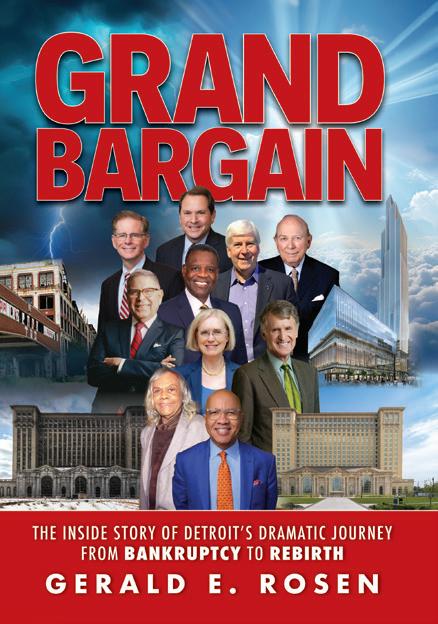

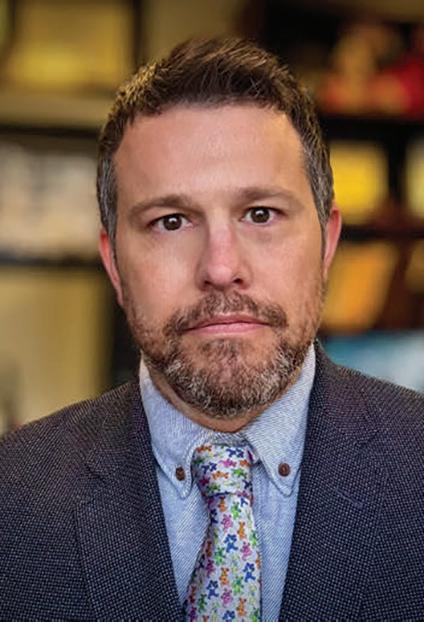











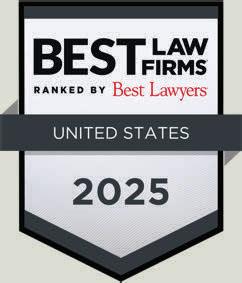

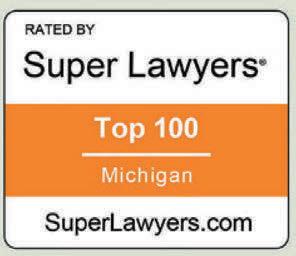


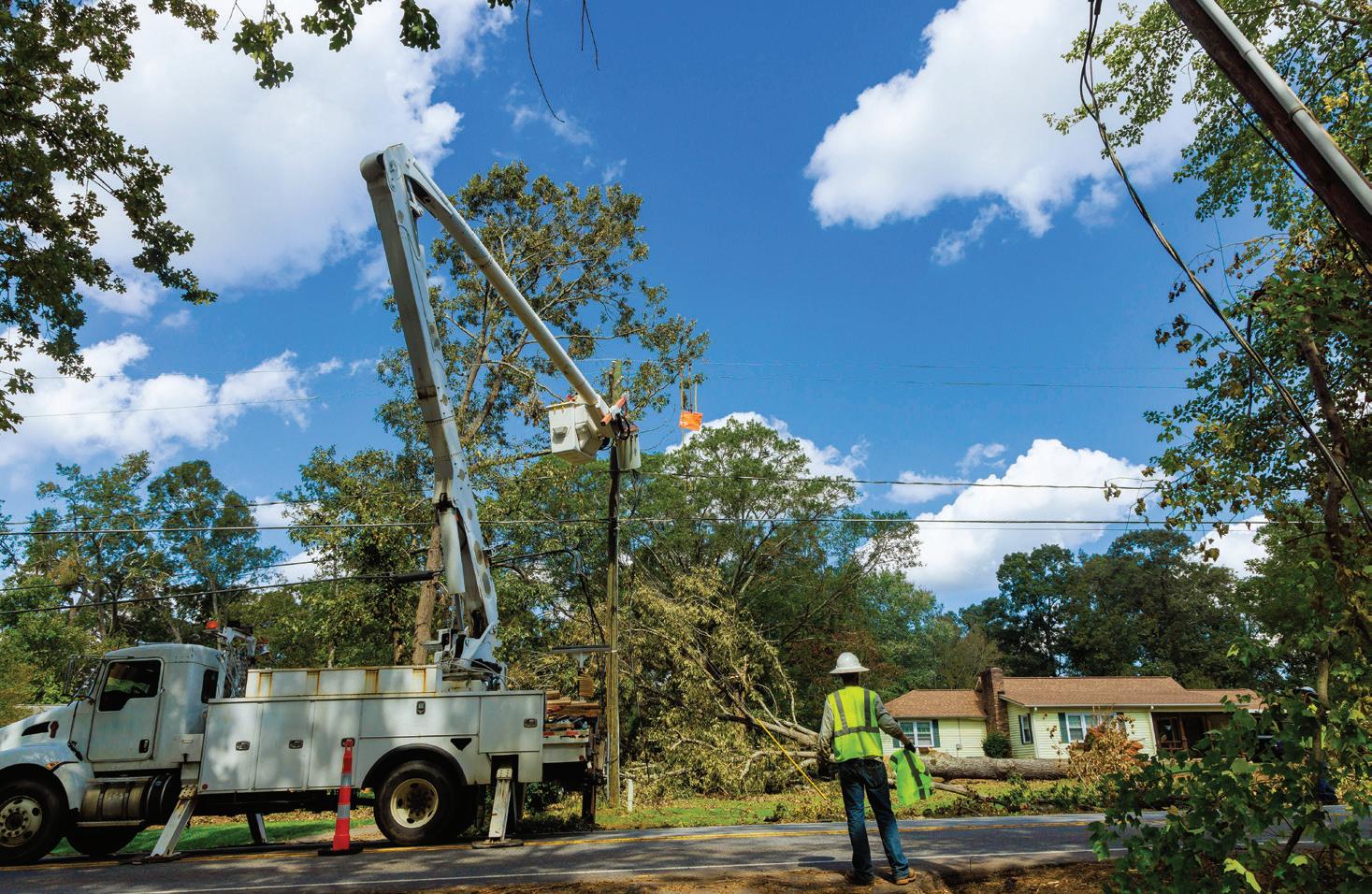
By Robert Kuhn
Utilities in Michigan are moving forward with ambitious plans to expand the state’s transmission line network significantly. Not only does this impact the delivery of electricity for retail consumers, but it also presents significant issues for property owners whose land the utility must take to construct new transmission lines. Although private companies, utilities have the authority to exercise eminent domain and take private property for just compensation.1 The construction and maintenance on easements taken by utilities through eminent domain can materially damage properties and their market value. Property owners are entitled to just compensation under the Michigan and United States constitutions for those damages. With the increased use of eminent domain to secure and expand the transmission line network, serious questions remain as to whether and how the entitlement to just compensation is being fulfilled.
Transmission lines serve as electric highways carrying high-voltage electricity from sources of energy production to areas of energy consumption for distribution, such as major metropolitan and urban areas. The lines are necessary for any functioning and modern energy infrastructure. However, they are crucial for green energy, including renewables such as wind and solar. Traditional forms of energy such as coal and natural gas are produced in a smaller number of highly centralized factories, which are generally located near major urban centers. By contrast, wind and solar farms must be placed in a higher number of locations scattered in widely dispersed and often rural areas.
The projected data on transmission line expansion paints the picture. According to the National Transmission Needs Study performed by the Department of Energy in 2023, regional and interregional transmission lines must increase by 20% and 25%, respectively, by 2035 in a “moderate” green energy and load growth scenario.2 If green energy growth is “high,” the percentages rise to 64% and 114%.3 If both green energy growth and total load growth are “high,” transmission lines must increase by 128% and 412%.4 Therefore, as the transmission line network uses more renewable energy, the need for transmission lines increases significantly with overall energy demand. Princeton University researchers similarly concluded that achieving net-zero carbon emissions by 2050 will require transmission line capacity to increase by 60% by 2030 and to triple by 2050.5
At the same time, Michigan is experiencing continued problems with grid reliability and blackouts. According to data from the Department of Energy, Michigan has experienced some of the highest rates of power outages and some of the lowest energy reliability in the country.6 In line with popular demand, the Michigan Public Service Commission, the state agency tasked with regulating utilities, energy rates, and transmission line approvals, has imposed increased conditions and pressure on utilities to shore up reliability and decrease outages.7 Recent increases in energy rates have been approved by the MPSC, predicated on the utilities taking greater action to ensure reliability, maintain lines, and clear trees and vegetation.8 These factors, among others, have pushed utilities to expand the size and scope of Michigan’s transmission line network and utility takings. As a result of this increased regulatory focus and public concerns about grid reliability, utilities have sought much wider and more expansive easements to construct and maintain
transmission lines in order to eliminate brush, tree, and building interference. Thus, utilities are seeking more land and greater easement rights to clear obstructions from transmission lines while, at the same time, they seek significantly expanded transmission line networks to meet future energy supply goals. The end result is utilities using eminent domain at a greater rate to take more land with broader easements, predominantly in dispersed rural areas.
One incoming project is by ITC, a major nationwide transmission line company. ITC plans to construct approximately 95 miles of new high-voltage transmission lines connecting to an interstate transmission line network.9 One part of the line is proposed to run up from the Indiana border and near Coldwater and Marshall in Branch and Calhoun counties, called the “Helix-Hiple” line. The second part is expected to run north from a substation near Grand Ledge in Eaton County up to Gratiot County outside of Carson City, called the “Nelson Road-Oneida” line. The projects propose a significant increase in high-voltage transmission line construction, requiring land takings across a wide swath of properties.
For many proposed and upcoming transmission line projects, utilities have approached property owners ahead of official condemnation proceedings and presented offers to purchase easements. Under statute, property owners are entitled to a “good-faith offer” of just compensation, which must generally be supported by a professional real estate appraisal.10 This provides essential procedural protection for property owners. When condemning agencies with eminent domain power approach laypeople seeking to acquire property, a professional appraisal helps establish an accurate baseline of value to ensure fairness, balance in negotiations, and informed decision-making. Compared to highly sophisticated utilities, property owners often lack representation and may be inexperienced in eminent domain matters and complex property negotiations.
Importantly, a proper valuation of damages in takings cases involves significant nuances that owners may not be aware of when first approached by a utility for the purchase of their property. Encompassed in the constitutional right to just compensation is an entitlement to not only the “fair market value of the property taken” but also the “severance damages to the remaining property.”11 By way of analogy, removing steps in a ladder cannot be valued based merely on the price of stand-alone sections of
wood. Damage to the ladder as a whole must be valued when its steps are removed. In many cases, damage to an entire property can significantly outweigh the isolated valuation of the square footage taken. The provision of accurate condemnation appraisals helps to ensure these principles of compensation are complied with while facilitating informed decisions from property owners negotiating with sophisticated utilities and governments. The provision of a good-faith offer with professional valuation of damages has been a fixture of American eminent domain law for decades.12
However, recently, utilities in Michigan have approached property owners and presented “market analysis” or “market studies” that purportedly value the land to be taken by the utility, without the performance of a real estate appraisal and without the provision of a good-faith offer. In many cases, these offers are initially presented verbally by third-party acquisition agents to unrepresented property owners. The market studies initially offered by utilities can have serious problems. For instance, the studies may value the compensation owed to property owners only by the land taken and exclude valuation of the damages to the remainder, an essential element of damages to which property owners are entitled.
To provide an example, a utility may propose to take an easement for high-voltage transmission line construction in close proximity to the property owner’s residence. The compensation offered will be calculated solely based on the amount of land taken and by valuing that land as vacant property. In these offers, the existence of the residence is not recognized and the resulting harm to the property value as a whole is not appraised. Yet the placement of highvoltage transmission lines, along with expansive easements with highly restrictive terms of use, can have significant impacts on the remaining property, especially one with a residential structure. Family residences can lose all of the trees and vegetation coverage that line the frontage of their property. The property may be subject to perpetual restrictions on natural growth or new construction, which could eliminate foliage and shade, reduce privacy and natural shielding from major roadways, and limit the property’s use for future development. In addition, placing high-voltage transmission lines close to residential structures can raise significant health and safety concerns among potential buyers in the market, further lowering the value of the remaining property.
In addition to concerns as to the proper valuation of damages, initial offers presented by utilities can include highly burdensome terms
and conditions. Proposed easements may limit the ability to sell and lease any part of the land for several years; the actual easement location, including the line and pole locations, may not be defined and could be subject to the utility’s sole discretion; the utility may be given rights to ingress and egress over any portion of the property; and the easements may allow for the construction of new and upgraded transmission lines in the future, including multiple lines and lines with higher voltage capacity than the project currently proposed. While condemnation proceedings require that utilities take only the amount of property that is necessary for the project at hand,13 easement terms offered prior to official condemnation proceedings can include highly burdensome easement language that can be used to upgrade or expand transmission lines and utilities in the future.
Therefore, it is vital that property owners who are subject to condemnation proceedings or who have been approached by acquisition agents for the purchase of their property carefully review any terms of a proposed purchase agreement or easement. Without proper review, owners can sign away significant property rights and burden their land with restrictive easements, which could leave their property substantially harmed for years to come. These future burdens can be far in excess of what property owners may have contemplated when they granted the easement. Further, it is essential for owners to understand the amount of compensation to which they are legally entitled in condemnation proceedings, including damages to the remaining property as well as relocation expenses when the taking dislocates individuals from their primary residence.14 Throughout the process, hiring competent counsel to ensure understanding and adequate protection of affected property interests is strongly advised.
Even when property owners receive the full amount of just compensation to which they are entitled, they may feel as though they are not made whole. The limit of just compensation for partial takings is generally the decrease in total fair market value for the property resulting from the taking. This can be far less than what is necessary to return property to its prior condition.15 Owners build lives, raise children, and grow communities around their property, and takings can leave impacts that are never fully resolved. These tensions and legal questions underlying current condemnation practices are unlikely to go away soon. With continued concerns about energy reliability, rising demand for energy in an evolving economy, and a greater
reliance on renewable energy, the expansion of transmission line networks combined with the use of eminent domain will continue apace.


Robert Kuhn is an attorney at Ackerman & Ackerman, where he focuses on representing property owners in condemnation and eminent domain proceedings. Kuhn is a member of the Real Estate Committee of the Oakland County Bar Association and the Real Property Law Section of the State Bar of Michigan. He attended the University of Michigan for both his undergraduate studies and law school. He can be reached by email at robert@ackerman-ackerman. com.
Footnotes:
1. See, e.g., MCL 486.252 (authority to condemn property for certain electric and gas corporations); MCL 460.565 (requiring regulatory approval for use of eminent domain for a major transmission line).
2. United States Department of Energy, National Transmission Needs Study 124-26, 133-34 (2023).

3. Id.
4. Id.
5. Larsen et al., Net-Zero America: Potential Pathways, Infrastructure, and Impacts 27, 76 (2021).
6. See U.S. News and World Report, Power Grid Reliability (2025), available at https://www.usnews. com/news/best-states/rankings/infrastructure/ energy/power-grid-reliability (collecting data from the Department of Energy); Climate Central, Surging Weather-Related Power Outages (2022) (reporting data on outages from 2000 to 2021 from the Department of Energy).
7. See, e.g., Michigan Public Service Commission, MPSC’s Focus in 2024: Boosting Electric Reliability, Expanding Public Engagement (2025); Michigan Public Service Commission, MPSC Approves Larger Power Outage Credits, Other Steps to Improve Electric Reliability, Protect Utility Customers (2023).
8. Michigan Public Service Commission, Commission Approves $153.8M for Consumers Energy to Improve Grid Reliability, Reduce Outages and Improve Service (2025); Michigan Public Service Commission, MPSC Authorizes $217,380,000 in Additional Revenue for DTE Electric Co. Investments to Boost Reliability, Modernize Aging Grid (2025).
9. See also ITC, Helix to Hiple Information (2025), available at https://mifuturegrid-openhouse.com/helix-tohiple/#project-overview (describing the project ITC proposes to undertake).
OCBA member Nicholas Andrews, a partner at Liss & Andrews, P.C., was recently sworn in as the 73rd president of the Michigan Association for Justice (MAJ). Andrews’s one-year term runs from June 1, 2025, to May 31, 2026.
“It is a privilege to begin my term as president of MAJ,” Andrews said. “I step into this role with deep respect for the strength of our membership and a firm belief in the power of focused, collective advocacy.”
Andrews represents victims of catastrophic injuries and insurance bad faith, advocating fiercely to ensure they receive the full benefits and care they are entitled to under Michigan’s no-fault insurance system. Andrews joined MAJ in 2004 and chairs the organization’s Bad Faith & Insurance Committee and serves on the Auto No-Fault Committee.
Andrews earned his J.D. from the Michigan State University College of Law in 1989, where he served as note and comment editor of the Detroit College of Law Review. Over the course of his distinguished legal career, he has handled more than 70 jury trials in both state and federal courts and has received the highest attorney rating from Martindale-Hubbell. Andrews has lectured extensively on trial practice, automobile law, and insurance law and has been selected as a case evaluator in both Oakland County and Wayne County circuit courts.
10. MCL 213.55(1); Dept of Transportation v Frankenlust Lutheran Congregation, 269 Mich App 570, 575 (2006) (explaining that the “good-faith offer” rule requires that a condemning authority “establish what it believes to be just compensation before initiating negotiations for the purchase of private lands” (emphasis added)).
11. Oakland County Board of Road Comm’rs v JBD Rochester, LLC, 271 Mich App 113, 115 (2006); M Civ JI 90.12.
12. See 42 USC 4651(2), (3) (the federal Uniform Relocation Assistance and Real Property Acquisition Policies Act of 1970, which set forth basic guardrails for takings, mandating that “[r]eal property shall be appraised before the initiation of negotiations” (emphasis added)).
13. MCL 213.56.
14. See, e.g., MCL 213.352; 42 USC 4622 (examples of statutory relocation expense provisions); Michigan Constitution, Art X, § 2 (requiring a 125% payment of value if the taking includes the individual’s “principal residence”).
15. See Dept of Transportation v Sherburn, 196 Mich App 301, 306 (1992) (explaining that the “cost to cure” defects on a property cannot exceed “the decrease in the market value of the [remainder] property if left as it stood”); M Civ JI 90.12 (discussing the methods of calculating fair market value in cases of partial takings).

OCBA Past President and Legislative Committee co-chair Sheldon G. Larky was recently appointed as a member of the West Bloomfield Township Zoning Board of Appeals for a term ending December 31, 2026.
Larky is a graduate of the University of Michigan and took master’s classes in personnel administration at Wayne State University before receiving his law degree from the University of Detroit Mercy School of Law in January 1970. While in law school, Larky clerked for Oakland County Circuit Court Judge Arthur E. Moore.
Following his becoming an attorney in June 1970, he was a partner at two law firms before opening his solo practice in June 1983. Since then, Larky has been involved as a mediator, arbitrator, and facilitator of civil cases. Larky was appointed a magistrate in the 45th District Court in April 2005 and served in that position until June 2015. He then served as a part-time magistrate in the 52-4 District Court until this past year.

Adkison, Need, Allen & Rentrop, PLLC, in Bloomfield Hills is pleased to announce that Candace Becker, Esq., has joined the firm as an associate attorney and will be a member of the firm’s litigation and municipal practice groups. Becker has experience in civil and commercial litigation representing corporate entities and brings advanced research skills and litigation knowledge to the firm.

By Christopher S. Patterson and Thamara E. Sordo-Vieira
Many residents vote and pay taxes in the same jurisdiction for years without modification. In fact, many residents would think that the only way to be located in another jurisdiction, like going from a township to a city or village, or even changing from one township to another, would be by purchasing a new residence and moving. Jurisdictional boundaries of local municipalities, however, are not set in stone. While only a small minority of boundaries change each year, it happens. Current economic forces and housing development pressures have increased the number of jurisdictional boundary changes. Surprisingly to many, there is no right to stay in the same municipality, and most processes to make such changes are performed between two governing bodies or at the request or determination of a county board of commissioners, an administrative body called the State Boundary Commission, or voters in the municipalities subject to the transfer.
Understanding Michigan’s Act 425 has become increasingly important as development pressures intensify and municipal service demands grow outside of urban centers. History teaches that boundary changes were not generally amicable. Cities and townships were in regular hostility regarding jurisdictional changes through a process identified as annexation. To avoid hostility or the formality of annexation, the state Legislature enacted the Intergovernmental Conditional Transfer of Property by Contract Act (Act 425) to promote economic development and sharing of governmental services via a contract and public process. Act 425 has been in effect since the 1980s. Its origins teach municipal practitioners and developer practitioners alike an alternative pathway for addressing economic development and shared resources.
But Act 425 does not address everything that practitioners need to be discussing and clarifying within an Act 425 agreement to ensure long-term positive relationships between the municipalities executing such an agreement. These agreements are authorized to last as long as 50 years with renewal potential reaching 99 years, and thus the drafters and policymakers involved in such agreements must ensure the parties’ expectations are clearly set forth in the agreement to avoid disputes over development milestones, tax and related revenue sharing, shared services such as water and sewer access, and other critical issues that are key terms for a successful Act 425 agreement. When two parties are willing to reach consensus for an amicable transfer through Act 425, practitioners who focus on these areas will protect their clients from future disagreement and be better positioned to navigate their clients through these complex terms. The result will be successful economic development supported by shared services through a conditional land transfer agreement provided by Act 425.
In 1968, the Michigan Legislature enacted the State Boundary Commission Act, which established the State Boundary Commission (SBC) to create a streamlined system for adjusting municipal boundaries through incorporation or consolidation. See Midland v Mich State Boundary Comm, 401 Mich 641, 650 (1977). Two years later, lawmakers amended the Home Rule City Act to authorize the SBC to handle land annexation petitions from townships to neighboring cities. This amendment aimed to curb the practice of “strip annexations,” which left townships with disconnected or irregularly shaped territories, complicating service provision. Shelby Charter Twp v State Boundary Comm,
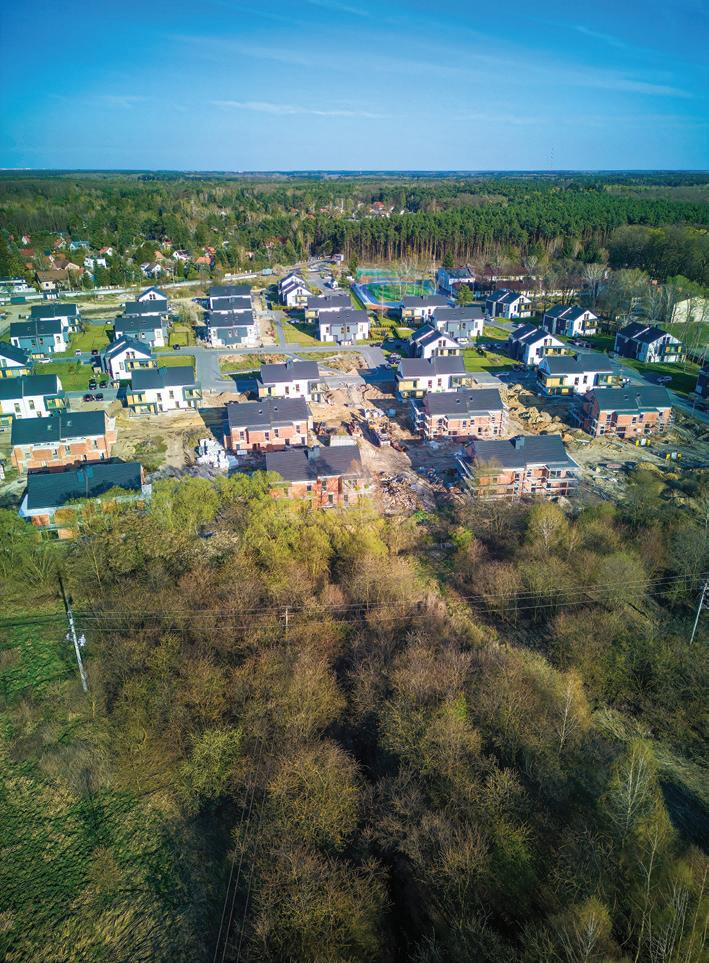
425 Mich 50, 59 (1986).
Under the amended Home Rule City Act, a city or individuals holding title to land can petition the SBC to annex land into a city. See MCL 117.9(3). If the petition is deemed valid, the SBC starts a multistep process to assess whether the proposed annexation should be granted, which includes holding a public hearing. MCL 117.9(2). At the public hearing, the SBC is required to assess the reasonableness of the annexation based on criteria set forth in Section 9 of the State Boundary Commission Act. MCL 117.9(3); MCL 123.1008; MCL 123.1009. A subsequent meeting is held, at which the SBC decides whether to approve the petition. MCL 123.1010(1). If the annexation petition is approved, it becomes effective unless a referendum petition is filed. MCL 117.9(5).
This procedure has been used to address annexation requests since 1970. However, even with the amendment, annexation remained divisive because the SBC, an intended neutral third party, could not prevent the harms and concerns associated with consistent acquisition of township land by adjacent cities. In an attempt to alleviate such consequences, the Legislature proposed a new solution.
Enacted in 1984 and amended in 1998, Public Act 425 of 1984 — effective March 29, 1985 — is officially titled the Intergovernmental Conditional Transfer of Property by Contract Act. The act is the unique statutory mechanism for two municipalities (cities, townships, and villages) to contractually transfer jurisdictional control over property. These unique contracts are authorized under Act 425 of 1984 to support “economic development projects.” Act 425 allows infrastructure and services to be shared
between two municipalities so that residential, commercial, and industrial developments can be constructed. In exchange for transferring the land, the contracting municipalities share the tax revenue generated from the new development. Residents receive fire, ambulance, and police protection; building services; zoning and planning; and library services from their municipality, based entirely on the negotiated transfer of powers between the two municipalities, and such services can be split among the municipalities based upon agreement. This even includes where a resident will be registered to vote in elections. With these transfers, the municipality can benefit from the conditions laid out in the agreement, such as construction or expansion of water and sewer systems or access to the other city’s services and improvements.
Act 425 agreements emerged as a flexible alternative to annexation, allowing municipalities to coordinate land development, share tax revenues, and avoid the legal, logistical, and political obstacles of formal annexation. The House and Senate analyses for Act 425 make this clear:
“By allowing two or more local units to work out mutually agreeable contractual arrangements for the transfer of land from one unit to another, to the benefit of all parties concerned, the bill would create a new approach to the allocation of limited resources among local units of government that would avoid the problems traditionally associated with annexation. Most importantly, the bill would allow the parties to the agreement to decide for themselves how and to what extent taxes and other revenues derived from the transferred land would be shared.”
Many Act 425 agreements are between townships and cities, which reflects the practical reality of municipal services in many areas of Michigan. Cities typically possess the water and sewer infrastructure necessary to spur development. Townships control the undeveloped land desired by developers. And of course, for those townships that do have access to or operate their own water and sewer infrastructure, development typically proceeds without an Act 425 agreement. But it is not solely for cities and townships. Village-to-township, township-totownship, and city-to-city transfers pursuant to Act 425 are also authorized.
Act 425 allows two or more units of government to conditionally transfer property for up to 50 years (subject to renewal) for the purpose of an economic development project
(MCL 124.22(1)), defined as:
“land and existing or planned improvements suitable for use by an industrial or commercial enterprise, or housing development, or the protection of the environment, including, but not limited to, groundwater or surface water. Economic development project includes necessary buildings, improvements, or structures suitable for and intended for or incidental to use as an industrial or commercial enterprise or housing development; and includes industrial park or industrial site improvements and port improvements or housing development incidental to an industrial or commercial enterprise; and includes the machinery, furnishings, and equipment necessary, suitable, intended for, or incidental to a commercial, industrial, or residential use in connection with the buildings or structures.” MCL 124.21(a).
Such transfer is governed by a written contract agreed to by all municipalities involved in the transfer. MCL 124.22(1).
Act 425 sets only four requirements for the contents of the contract. The contract must provide for (1) the length of the contract; (2) information related to the sharing of taxes and the manner of sharing; (3) methods to enforce the contract; and (4) jurisdiction over the transferred
area upon termination of the contract. MCL 124.27. Under Act 425, contracting municipalities have the power to include in the contract any other necessary or proper matters agreed to, as well as other suggested provisions. See MCL 124.26. These provisions are negotiated between the local units based on consideration of the statutory factors laid out in MCL 124.23, which are similar to the factors used for the annexation process pursued by developers seeking to have their property transferred into home-rule cities. See MCL 124.23.
Aside from these procedural requirements, Act 425 does not mandate the use of the statutory factors in any other procedural step. Instead, Act 425 mandates that the local governmental units hold at least one public hearing, noticed pursuant to the Open Meetings Act. MCL 15.261 et seq. Following this public hearing, the members of the local unit’s legislative body can vote to enter into a 425 contract. MCL 124.24(2). For 30 days following the public hearing, a valid referendum petition may be filed seeking to place that agreement on the ballot before it can become effective, if not otherwise rescinded. See MCL 124.25.
If the Act 425 agreement becomes effective, no other method of annexation can occur as it relates to the area transferred under the agreement, thereby manifesting the Legislature’s intent that 425 agreements be a viable and pro-

tective alternative to annexation. MCL 124.29.
Public Act 425 was enacted at a time when traditional annexation routes were proving increasingly inefficient and adversarial. Prior to its enactment, cities in Michigan had limited ability to extend municipal services or jurisdiction without resorting to annexation — often leading to political and legal conflicts, particularly with townships. The act represented a compromise, enabling municipalities to share in the costs and benefits of land development through mutual cooperation.
The act allows for more-fluid development agreements. This approach acknowledges that urban growth rarely conforms neatly to preexisting political boundaries. Instead of rigid annexation, Act 425 permits jurisdictional transfers that allow township and city interests to be addressed as best as possible.
From a governance standpoint, Act 425 strengthens interlocal relationships by requiring both public input and formal agreement between the parties. This not only provides legal cover for controversial land transfers but also enhances transparency and local accountability. Additionally, it reduces the likelihood of the protracted legal battles that often accompany annexation or disputes over tax jurisdiction.
A number of municipalities have utilized Act 425 to establish successful economic development zones. For example, the city of Lansing and Delta Township entered into an Act 425 agreement that supported a significant General Motors expansion, bringing new employment and tax revenue to both entities. These types of collaborations often include provisions for the extension of water and sewer infrastructure, the coordination of emergency services, and unified zoning or land use planning. An Act 425 agreement also serves as a useful tool in securing state and federal infrastructure grants, as it shows unified planning and resource sharing.
While Act 425 provides the legal mechanism, its success often hinges on political and institutional relationships. Trust and shared goals are essential. Municipal officials must invest time in negotiating equitable tax-sharing formulas, clear terms for service responsibilities, and realistic infrastructure commitments.
Ongoing intergovernmental committees, sometimes formalized in the Act 425 agreement itself, are often the best way to manage these relationships. These committees can review the agreement’s implementation, monitor
compliance, and resolve emerging concerns without resorting to formal dispute resolution mechanisms. Having a clear and specific written contract is essential.
Act 425 agreements are not immune to concerns about equity and community representation. If an Act 425 agreement is perceived as favoring a developer or one of the municipalities at the expense of residents, it can generate significant local opposition. That’s why public hearings and open deliberations are crucial — not just as legal formalities, but as venues for democratic participation.
Moreover, municipalities cannot simply use economic gain as a justification for overriding local governance structures. This philosophy aligns with the intent of Act 425, which ensures both parties retain control, share governance responsibilities, and address those concerns by assessing various factors set forth in Act 425.
Jurisdictions participating in Act 425 agreements enthusiastically prefer long-term agreements, with most agreements utilizing the 50 years permitted by statute, and some even extending for the additional period not to exceed 99 years. The longer the contract term, the greater the likelihood that the original principles and rationale will be forgotten; thus, practitioners need to strive for clear language consistent with the parties’ expectations.
Revenue Sharing: Practitioners must carefully draft revenue-sharing provisions to address the complex interplay between development value and tax obligations. The most critical consideration is ensuring that revenue-sharing formulas specifically address taxes captured on the taxable value of the actual development project, not merely the underlying land value. Many agreements also fail to address what happens to revenue sharing during various phases of development. Consider provisions that account for construction periods when assessed values may be artificially low; phased development projects spanning multiple years; and infrastructure improvements that may temporarily reduce taxable value via statutory mechanisms, such as tax increment financing to fund such infrastructure. Some of these issues can be addressed through minimum revenue guarantees to ensure a baseline revenue is provided regardless of development status and infrastructure investments.
Zoning and Planning: Act 425 agreements are often developed as a reaction to immediate development opportunities rather than as part of a proactive growth strategy. Unfortunately, the act only requires “consider-
ation” of the relationship of the transfer to any applicable land use plan, and many agreements do not have robust future considerations about land use and planning. This reactive approach creates significant long-term problems for both municipalities and developers. The language of the act itself suggests that the appropriate use of an Act 425 agreement is for an economic development project, not as part of a proactive growth strategy, which limits the tool’s effectiveness for comprehensive planning. One of the most problematic aspects of many Act 425 agreements is the failure to address zoning authority and initial zoning classifications. Practitioners should ensure that agreements specifically address the zoning classification that will apply to the transferred property immediately upon the effective date of the agreement. To avoid concerns over later amendments modifying the zoning of the transferred area, many existing agreements require mutual consent between the two units on decisions related to planning and zoning of the subject property, recognizing that both municipalities have ongoing interests in land use decisions affecting the transferred area. While we regularly see these provisions, anecdotally, if no zoning changes were made to construct the development, this portion of the agreement is often not performed, which can be problematic as decades go by and redevelopment or additional expansion then occurs.
Joint planning provisions should ideally create a joint planning commission. The two municipalities themselves can also work to have joint comprehensive plans for the specific transferred area and address development standards and buffer zones. This will alleviate concerns and impacts for areas adjacent to the transferred property to ensure compatible development and avoid conflicting land uses. The most effective Act 425 agreements treat planning and zoning coordination not as an afterthought but as a fundamental component of the economic development strategy that the agreement is designed to facilitate.
Termination Provision Considerations: Act 425 agreements need to address what happens when the anticipated economic development project never materializes or only partially develops. To avoid later disputes, practitioners must draft termination provisions addressing when the agreement does not achieve the statutorily prescribed economic development purposes. Although it is not required by Act 425, the agreement can establish clear milestones for infrastructure commencement and completion, as well as the subsequent development commencement and completion. Automatic reversion of the transferred area can then occur within a definite time if no develop-
ment begins or the project is not substantially completed.
The difficulty that arises in such provisions is that the two municipalities are not developing the project in most instances. Thus, what constitutes substantially complete should be defined through use of objective standards, including those readily discerned based upon knowledge most intimately held by the developer. This may include standards assessing the percentage of the construction investment complete, job creation based upon estimated total job creation, tax revenue in comparison to total proposed project tax base, or the required completion of phases. The value of identifying phases for large tracts of land with more-complex developments is that undeveloped tracts can be contractually reverted, with a lawful amendment, to the transferring jurisdiction if specific milestones are met. This prevents the undeveloped land from being held during the agreement when tax sharing may be low and few governmental services are required for the undeveloped tract of land. By addressing these potential outcomes during preparation of the Act 425 agreement, practitioners can mitigate the risks associated with nonperforming economic development projects while still providing substantial opportunity for those that will occur and proceed to fruition.
Remedies: Act 425 agreements — as contracts between governments — are subject to traditional contract remedies, but the agreements rarely contract for any specific remedies despite the unique circumstance created by conditional transfers of land where infrastructure and structures may have been developed or be operated by another government. Practitioners may find that addressing remedies for a termination due to a breach of the agreement will create uncertainty as to court-ordered remedies based on Michigan’s large body of contract law. Given the unique nature of land transfers and infrastructure investments, monetary damages may be inadequate to address breaches. Specific performance may be particularly appropriate for compelling completion of promised infrastructure improvements; enforcing revenue-sharing payment obligations; requiring compliance with development milestones and standards; and mandating provision of agreed-upon municipal services. Alternatively, material breaches of a conditional land transfer agreement may require rescission and restoration of the status quo prior to execution of the land transfer agreement. This remedy is particularly relevant when economic development projects fail to occur or changed circumstances — such as the recession from late 2007 to mid-2009 — make continued performance inequitable.
Dissimilar to many contracts, Act 425
agreements involve ongoing governmental relationships that extend beyond the specific agreement. Court actions may damage longterm intergovernmental cooperation, while inadequate enforcement may encourage future noncompliance. Including provisions regarding reasonable attorney fees and costs can create incentives for good-faith performance and deter frivolous litigation. Even before it comes to filing suits in a court of competent jurisdiction, the agreement can specify the parties’ interest in binding or nonbinding mediation as well as arbitration. Structured mediation with specific procedures and timelines will keep the parties on track and provide for meaningful good-faith exchanges to resolve the dispute at hand. Mediation and arbitration also allow the parties to identify individuals with municipal land transfer experience to provide the necessary expertise to resolve the dispute.
Act 425 supports intergovernmental cooperation that avoids the hostile dynamic presented by the annexation of property from one jurisdiction to another. Instead, such an agreement
provides for consensus building and mutually beneficial economic development partnerships. is requires equal and fair benefits for both parties involved. Inequities must be avoided to provide for a win-win result.
Even despite the laudable advantages of Act 425, it also presents substantial risks and unclarity. Not every economic development project will occur, nor will it always occur as the parties expected. is disconnect between infrastructure investment and development outcomes underscores the critical importance of comprehensive agreement drafting that addresses not just the provision of services but the entire economic development process. e path forward for Act 425 practice requires practitioners to view these agreements not as simple land transfers with revenue sharing but as complex, long-term partnerships requiring the same careful attention to detail typically reserved for major commercial transactions.

amara Sordo-Vieira, senior associate at Fahey Schultz Burzych Rhodes PLC, counsels local governments on annexation, intergovernmental agreements, and utility regulation. She brings a
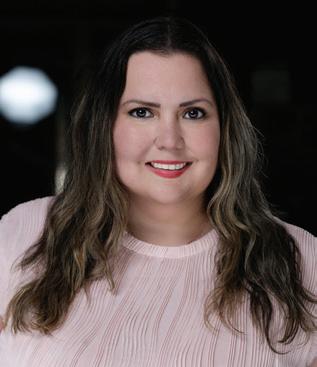
strong litigation background in state and federal courts to her municipal practice. Sordo-Vieira is active in the Oakland County Bar Association, serving on the L editorial board and as a board member of the OCBA Inn of Court. tsordo-vieira@fsbrlaw.com

Christopher Patterson, member at Fahey Schultz Burzych Rhodes PLC, advises municipalities on land use, zoning, utility matters, and property transfers. He serves as lead counsel to several local governments and has deep experience with intergovernmental agreements under Act 425. A licensed Michigan real estate salesperson, Patterson blends legal and practical insight. He is a past chair of the Ingham County Bar Association’s Real Estate Section. cpatterson@ fsbrlaw.com
By Asma Q. Al-Khshali
Ijoined the Oakland County Bar Association the way most people do: by accident, and also on purpose.
At the time, I figured it was a solid “résumé thing” and that one day — down the line — it might be helpful for something vaguely adult and lawyer-y. I didn’t join because I thought I’d be flipping through LACHES with a highlighter, nodding to myself and texting colleagues, “Did you read that piece on sanctions? Actually really useful.”
But that’s exactly what started happening. Turns out, the OCBA isn’t just an extra line in your LinkedIn bio or a place where lawyers exchange business cards and half-hearted pleasantries. It’s a real, living, breathing legal community — one that can grow with you, challenge you, and (if you let it) actually support you.
YOU DON’T KNOW YOU NEED IT UNTIL YOU NEED IT
Here’s the thing: Law can be lonely. We don’t talk about that enough. You’re in your office (or at your kitchen counter if you’re a hybrid creature like me) drowning in deadlines, motion practice, client drama, and existential dread. It’s a lot. en one day, you show up to an OCBA event — maybe reluctantly, maybe just to get out of the house — and you look around and realize: Oh, they get it. ese people understand what it’s like to go from “Just one more edit” at 7 p.m. to “How is it midnight and I forgot to eat?” ey’ve been through it. at realization alone is worth the price of membership.
I wasn’t expecting to love the OCBA publications, but I do. I really do.
I read LACHES regularly, not out of obligation but because I always learn something new. e articles are practical, well edited, and sneakily entertaining in a “Who knew a piece about discovery sanctions could be this engaging?” kind of way.
It’s not just law updates. It’s insight — real, applicable, Michigan-specific, sometimes funny, and often sharp — written by people who are in the trenches just like the rest of us. It’s one of
the few legal publications I make time for on purpose.
I’ve never cared for the word “networking.” It sounds forced, transactional, and slightly stiff. But when you’re surrounded by people you genuinely like, respect, and enjoy learning from, it doesn’t feel like networking — it just feels like being in the right room. e OCBA has given me those rooms.
Whether it was a committee meeting, a social mixer, or an event I didn’t expect much from but ended up staying late at, I’ve met people who became mentors, colleagues, and sounding boards for the “What do I even do here?” moments we all have. I’ve gotten referrals, job leads, and, most importantly, a professional circle that makes me feel less like I’m lawyering in a vacuum.
And yes — there are name tags. But also? ere are real conversations.
As attorneys, we’re trained to measure value in six-minute increments and outcomes. But the OCBA offers a different kind of value — one that’s less obvious but far more sustaining.
It’s in the judge who pulls you aside to give you quiet feedback you wouldn’t have gotten elsewhere.
It’s in the casual chat with another attorney who’s been where you are and offers a perspective that saves you hours of stress.
It’s in the newsletter article that clarifies a point you were silently struggling with.
Being a member of the OCBA isn’t about competitive edge. It’s about staying sharp, staying informed, and — most importantly — staying connected to a profession that too often pulls us into silos.
at’s what makes the OCBA not just worth joining but worth investing in.
No one’s keeping score, and there’s no one-size-


fits-all approach to being an “active” member. But if you want to get more out of your OCBA membership than a few emails and event invites, here’s what worked for me:
• Show up more than once. e first event might feel awkward. e second will feel familiar. By the third, you’ll recognize names — and they’ll recognize yours.
• Don’t be afraid to ask. Whether you’re looking for advice, introductions, or “What’s that judge like in motion call?” — this is the place to ask.
• Say yes to something. Write an article. Volunteer for a project. Attend an event you’d usually skip. You’ll be surprised where those yeses lead.
• Find what actually interests you. Not everyone wants to serve on a committee or organize panels. Maybe your thing is writing. Or mentorship. Or just reading the publications and staying informed. It all counts.
For me, OCBA membership has never been just about professional development — it’s been about personal growth. It’s about finding people who understand the highs and lows of this work, who celebrate your wins and help you process your losses. It’s about remembering that behind every legal brief or case citation is a person — someone just trying to make it through another day in this demanding, rewarding profession.
So, whether you’re new to practice, midcareer, or a seasoned litigator looking to reconnect, I can’t recommend the OCBA enough. It’s not just a professional community — it’s a personal one. And in a career that can be both all-consuming and incredibly meaningful, that kind of support makes all the difference.

Asma Q. Al-Khshali focuses her practice on business, commercial, and corporate litigation, as well as municipal and employment matters. She started her legal career at the Michigan Court of Appeals, where she built the discipline and perspective she brings to every case. Al-Khshali is known for being clear, candid, and un inching in her advocacy. Her clients trust her to cut through the noise and get to the point.
6/2/2025
Warren
2024-291885-FH
People v. Melzo
2024-291468-FH
People v. Douglas
2024-208559-CH
Coach House Apartments v. Hardred Barnes
2023-198147-NH
Mark
Boegehold v. William Beaumont Hospital
2024-205824-NO
Brian Mierendorf v. Kroger
2025-292620-FH
People v. Mathiea
2025-293091-FH
People v. Baker
2024-290560-FC
People v. Ramirez Jr.
2024-289900-FH
People v. Debose
2024-208533-NO
Collette Gulley v. Benjamin Holloway
2023-285666-FC
People v. Chavez-Rivas
2023-287159-FH
People v. Croft
2024-205547-CB
Biotech Clinical Lab v. RSL Medical Marketing
2024-204877-CB
Bloomfield Hills Swim & Tennis v. Gregory Yatooma
2024-291319-FH
People v. Jackson
AlexanderVisiting Judge
AlexanderVisiting
HattyVisiting
Mahira Musani
Patrick Gagniuk
Andrew McGarrow
Melissa Krauskopf
Gabrielle Lacy
Ian Bolton
Mary Pat Meyers
Lauri Stewart
Jonathan Marko
Aleasha Taweel
Mahira Musani
Lauren Askew
Kimberly Woodard
Stephanie Carson
Zachary Houchin
Mitchell Ribitwer
C/S Poss. of Meth/Ecstasy
2024-206296-NI
Chelsey Elias v. Progressive Michigan Insurance Co.
2024-290773-FC
People v. Swarthout
2023-201755-NH
Caitlin Brick v. IEPPC
Urgent Care
Housing & Real Estate
Zachary Houchin
Daniel Gross
Thomas Krall
Timothy Clifford
Erica Smith
Shannon Smith
Qamar Stamos
James Fillmore
Mark Rossman
Philip Cwagenberg
Adam Behrendt
Ethan Holtz
Andrea Ajlouni
Brent Jaffe
Nicholas Draugelis
Trevor Zamborsky
Dillon Salge
Alona Sharon
Nichole Omilion
Amy Schlotterer
Other Personal Injury
Aslt. w/ I GBH Less than Murder or by Strang., DV
Ct. 1 AWIM, Cts. 2, 4, 6, 9 Weap. FF, Ct. 3 Fel. Aslt., Ct. 5 FA Disch. from M/V, Ct. 7 CCW, Ct. 8 Fel. Poss. FA
Carrying a Concealed Weapon Medical Malpractice Felonious Assault Other Personal Injury Felonious Assault
Cts. 1 & 2 CSC 2nd Deg. (U/13), Ct. 3 CSC 2nd Deg. (Relationship) Business
3rd Deg., CSC 4th Deg.
1 & 2 CSC 1st Deg., Cts. 3-5 CSC 2nd Deg.




















Whatever words we utter should be chosen with care for people will hear them and be influenced by them for good or ill.”1
I doubt that anyone reading this article has unquestioningly agreed with every court ruling they have encountered either generally or in the more limited scope of cases in which they have appeared or represented a client. My guess is that each of you has disagreed, perhaps vigorously, with at least one ruling during your career. Perhaps you vented to a client, a colleague, or a significant other. I submit that this is not only normal but healthy. However, the key becomes how we convey our disagreement. As my mom likes to ask, “Will I be the whisper of a cooling breeze or a bull in a china shop?”
I submit that launching a scorched-earth campaign against a judge or judges in court, in the legal community, on the internet, or in the media for an adverse ruling is less helpful. I wish that I could identify a bright-line test for when criticism morphs into abuse, but like the old line about pornography, I know it when I see it. Consider times when counsel argues with the court following a ruling out of unchecked passion or to “make a record” instead of simply asking the court for a clarification of its ruling. As Justice Sandra Day O’Connor said:
“ e freedom to criticize judges and other public officials is necessary to a vibrant democracy. e problem comes when healthy criticism is replaced with more destructive intimidation and sanctions.”2
I pen this piece with caution, recognizing the vigorous debates occurring within our society about the role and voice of the judiciary. While several federal cases and opinions currently fill the news and social media, my focus, like the late Rep. Tip O’Neill’s, is local. Over the last few months, I have encountered or learned of various courtroom outbursts, social media posts, or statements that not only have
By Richard Lynch
been disrespectful but trend toward a violation of MRPC 3.5(d) and 6.5(a). I wish that I could explain this trend, as that would offer guidance on how to resolve the problem. Unfortunately, these practices seem a part of the oftrecognized decline in civility throughout the practice of law and society in general, especially via social media.
In his 2024 Year End Report on the Federal Judiciary, Chief Justice John Roberts referred back to Chief Justice William Rehnquist’s comment that “[a] natural consequence of life tenure should be the ability to benefit from informed criticism from legislators, the bar, academy, and the public.”3 Chief Justice Roberts then went on to write:
“Unfortunately, not all actors engage in ‘informed criticism’ or anything remotely resembling it. I feel compelled to address four areas of illegitimate activity that, in my view, do threaten the independence of judges on which the rule of law depends: (1) violence, (2) intimidation, (3) disinformation, and (4) threats to defy lawfully entered judgments.”4
Just as these comments apply to the federal courts, there is application for the state courts. I touched upon threats of violence in a prior article. I believe that we all can agree that violent acts or threats of same have no place in our society. Unfortunately, this remains a challenge to our legal system. Moving forward, we have all disagreed with a judicial ruling during our careers; however, the proper response to such disagreements is never intimidation, disinformation, or threats to defy an order.
Michigan law clearly provides that “[a] party must obey an order entered by a court with proper jurisdiction, even if the order is clearly incorrect, or the party must face the risk of being held in contempt and possibly being ordered to comply with the order at a later date.”5 e rule of law that we all have sworn or
affirmed to uphold depends upon this principle. e Michigan Supreme Court has touched upon the reasoning for this obligation in Grievance Administrator v. Fieger 6
“[A] lawyer’s duty to maintain a respectful attitude toward the courts is ‘not for the sake of the temporary incumbent of the judicial office, but for the maintenance of its supreme importance.’”7
us, while we may firmly, and accurately, believe that a judge got it wrong, we should temper our passion with professional judgment and manage how we convey our opinion. Arguing with the judge on the record, ranting in an Instagram post on the way back to the office, or issuing a screed on Facebook may provide temporary satisfaction during a fit of pique. However, like Samson destroying the Philistines’ temple, these are acts of self-destruction. Such acts will not change the result. Counsel should remember that many legal remedies exist to address the concern of an inaccurate ruling. Ill-tempered attacks do not achieve that goal, nor do they improve your reputation in the community. Most importantly, such acts do not improve the legal system we choose to serve. In closing, I ask you, my colleagues, to work collaboratively to support, not undermine, the legal system. Will judges rule correctly 100% of the time? Perhaps not. However, it becomes far easier to solve issues when we work toward a common purpose, for “harsh counsels have no effect; they are like hammers, which are always repulsed by the anvil.”8

Richard Lynch is the court administrator for the Oakland County Circuit Court.
Footnotes:
1. Buddha Quotes. BrainyQuote.com, BrainyMedia Inc., 2025. https://www.brainyquote.com/quotes/ buddha_118669, accessed July 2, 2025.
2. “Reflections from My Interview with Trailblazing Supreme Court Justice Sandra Day O’Connor.” Forbes, Dec. 1, 2023. https://www.forbes.com/sites/ marianneschnall/2023/12/01/reflections-from-myinterview-with-trailblazing-supreme-court-justicesandra-day-oconnor, accessed July 23, 2025.
3. https://www.supremecourt.gov/publicinfo/yearend/2024year-endreport.pdf, at 5 of 15, accessed July 2, 2025.
4. Id
5. People v Mysliwiec, 315 Mich App 414, 416; 890 NW2d 691 (2016).
6. Grievance Administrator v Fieger, 476 Mich 231; 719 NW2d 123 (2006).
7. Id. at 243.
8. Claude Adrien Helvetius Quotes. BrainyQuote.com, BrainyMedia Inc., 2025. https://www.brainyquote.com/ quotes/claude_adrien_helvetius_405154, accessed July 2, 2025.

By Andrew M. Harris
How does CCSEM receive its funding, and what are its major needs?
CCSEM is a nonprofit, which makes it a challenge for the clinic to compete within the legal services industry. We rely upon grants, charitable donations, and modest fees. [Our] greatest needs are staffing and filling open positions. For example, we are hoping to secure sufficient funding for a paid part-time legal services coordinator position to support our paralegal.
Let’s talk a little about the connection between the OCBF and CCSEM.
he Oakland County Bar Foundation is fortunate to help many charitable organizations that help us fulfill our mission of promoting access to justice and informing our community about the law. Recently, I had the privilege to speak with Monica Tay Belej, Esq., the immigration legal clinic manager for one of the OCBF’s proud grant recipients, Catholic Charities of Southeast Michigan (CCSEM) — more specifically, the La Casa Amiga Legal Clinic in Pontiac.
ANDREW M. HARRIS: Please tell us a little bit about CCSEM.

Following is a summary of my conversation with Ms. Belej (edited to align with LACHES).
The Oakland County Bar Foundation’s mission is to ensure access to justice and an understanding of the law in our community. It is dedicated to:
Improving and facilitating the administration of justice in Oakland County and throughout the state of Michigan;
Ensuring to the fullest extent possible that legal services are made available to all members of the public;
Promoting legal research and the study of law as well as the diffusion of legal knowledge;
Promoting the continuing legal education of lawyers and judges; and
Educating the public as to their legal rights and obligations, and fostering and maintaining the honor and integrity of the legal profession.
If you know an organization that could use assistance to pursue these goals within Oakland County, please refer them to ocba.org/ocbfgrants, where they can find information about applying for a grant from the foundation.
MONICA TAY BELEJ: CCSEM, which has its corporate office in Southfield, performs “works of mercy” of the Catholic Church, tasks which show respect for life and human dignity. CCSEM serves “those most in need” within the following six metro Detroit counties: Lapeer, Macomb, Monroe, Oakland, St. Clair, and Wayne. A recipient need not be Catholic to receive services from CCSEM.
CCSEM serves “those most in need.” Who meets this criterion?
Generally, “those most in need” are the poor and vulnerable who could be suffering from poverty or homelessness. It could also be someone in foster care or senior citizens. A vulnerable population I work closely with is the immigrant community, which is sadly often the target of unscrupulous nonlawyers (and even some lawyers) who take advantage of this group’s unfamiliarity with legal procedure and language.
Please tell us more about your role with CCSEM.
I am a licensed attorney in New York and Michigan and serve as the immigration legal clinic manager for CCSEM in Pontiac, which is walking distance from downtown. I started this role in January 2024.
My work covers many family-based legal services for low-income immigrants, such as applications for green cards and citizenship, alien relative petitions and immigrant visas, and renewals of DACA and employment authorization. Each case my team (which includes another attorney and a paralegal accredited by the Department of Justice) takes on involves an initial consultation. If the initial consultation requires less-complex services, work can be performed almost immediately. For more-complex matters, CCSEM will complete in-depth screening (including income verification) to verify need.
In 2024, the clinic served 278 new individual clients, most of whom learn about the clinic through word of mouth, family/friends, or church services.
OCBF and CCSEM first connected in 2021, when OCBF issued its first grant to us. e OCBF’s mission and CCSEM’s work aligned again in 2023 and 2025, when the OCBF issued additional grants. OCBF’s contributions have helped CCSEM move forward with important projects like an online filing clinic for DACA renewals, legal services for Afghan refugees, and broad-based community education (needed even more so in these highly uncertain and unsettling times for our immigration clients). Most recently, the OCBF’s grant helped to fund our paralegal.
What drew you to CCSEM’s work?
It’s funny — I have no direct immigration experience in my family, but I just felt a calling to do this work. I was in private practice with Kirkland & Ellis LLP for two years, followed by a nonprofit in Queens for one year, after which I took seven years to stay home with my children. en I started at CCSEM in 2011, where I’ve been ever since. So even though I’ve only been the immigration legal clinic program manager for a year and a half, I’ve actually been working at CCSEM for 14 years — since 2011. I find my job deeply fulfilling.
What is one more thing you’d like our LACHES readers to know about CCSEM?
Immigration is often incorrectly oversimplified into being either citizenship or illegal status. Instead, it is a complex and extremely nuanced area of law. Oftentimes, even those without proper documentation may have a path to citizenship. Sometimes, though, there is not a path, and even knowing this reality can be helpful to provide finality — making it harder for these individuals to be taken advantage of by those looking to exploit hope for the wrong reasons.
ank you for your time and noble service to our community — aligned, of course, with the OCBF’s mission.
It’s been my pleasure — thank you for the OCBF’s support.

Andrew M. Harris is a shareholder with Maddin Hauser Roth & Heller P.C. in South eld, Michigan, where his practice includes business litigation and commercial real estate. Harris is also a licensed civil mediator. He lives in Birmingham with his wife (Ti any), two teenage sons (Roger and Russell), and two dogs (Maizey and Blue).
The mission of the Oakland County Bar Association is to serve the professional needs of our members, enhance the justice system, and ensure the delivery of quality legal services to the public. We fulfill our mission through our 30 committees, regular networking events, and numerous educational programs for both OCBA members and the public. We work hand in hand with the OCBA volunteer board directors and members, and we partner closely with the courts. Below are recent examples of the OCBA at work in service to the bar and to the community.
On Friday, June 13, the OCBA offered an intensive full-day training program specifically designed for attorneys in practice for less than five years and law students at the Oakland County Circuit Court. About 100 newer attorneys learned how to navigate the court system and best represent clients from over 35 dynamic presenters including judges, judicial staff, and expert attorneys. These fully loaded practical sessions aimed to help new attorneys become professional, confident, and successful practitioners in Oakland County and beyond.
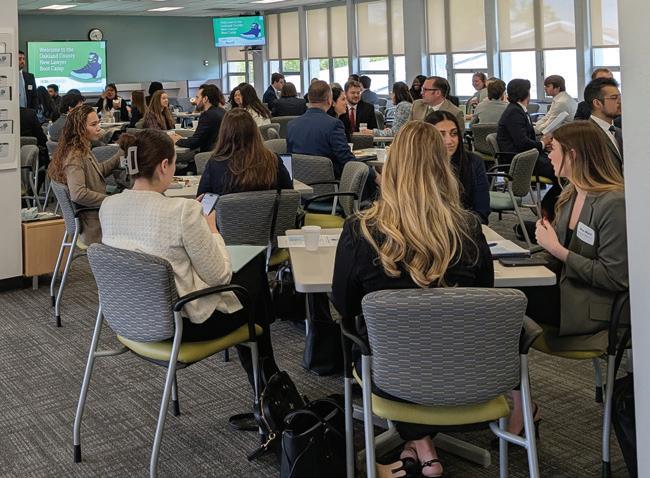
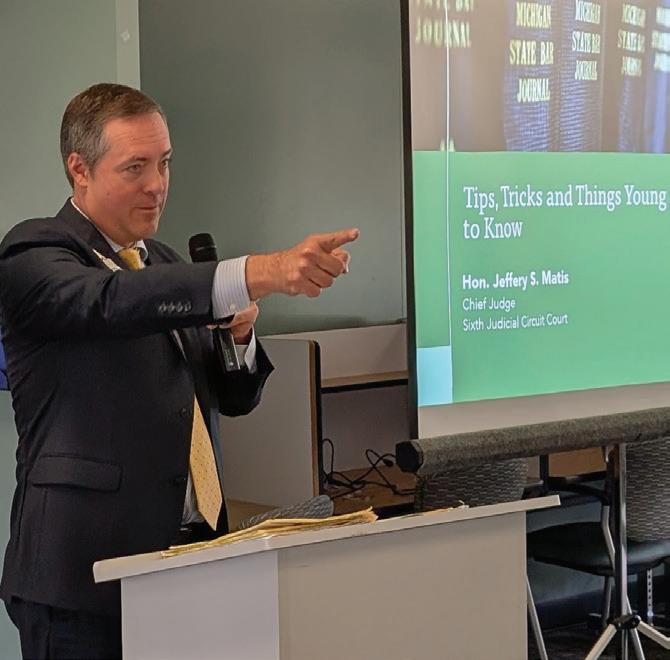
The OCBA and Oakland County Circuit and Probate courts were thrilled to host the New Lawyer Admissions Ceremony on Friday, May 16. This prestigious event welcomed the seven newest members of our legal community as they officially took the oath to uphold justice and serve the public with integrity. Friends, family, and colleagues were invited to join in this momentous occasion celebrating these newly minted professionals honoring their new beginnings in the legal profession!
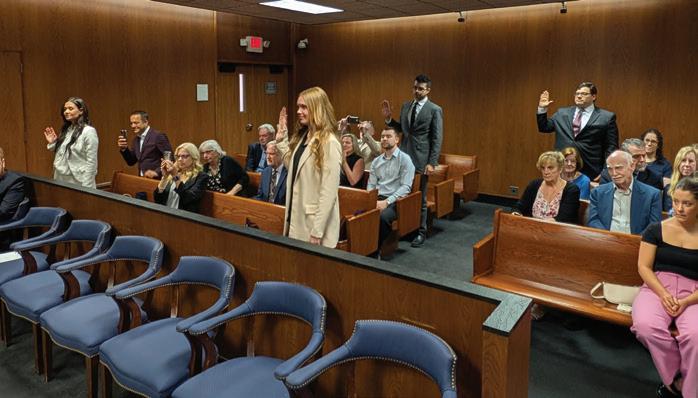
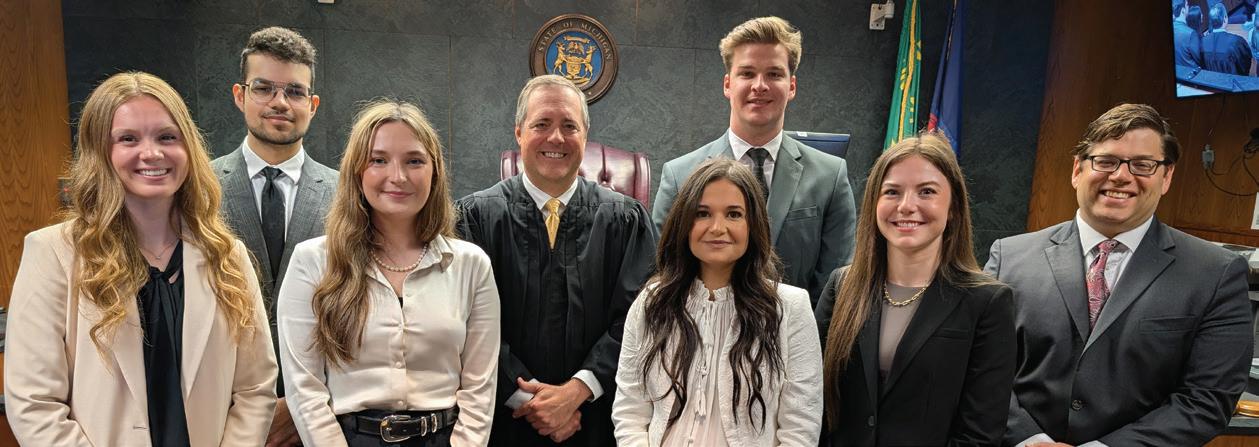
The OCBA Membership Committee presented another evening of valuable networking on Monday, May 19, at Roadside B&G in Bloomfield Township. Close to 25 participants enjoyed delicious food and a cash bar while connecting with their colleagues in a festive setting.
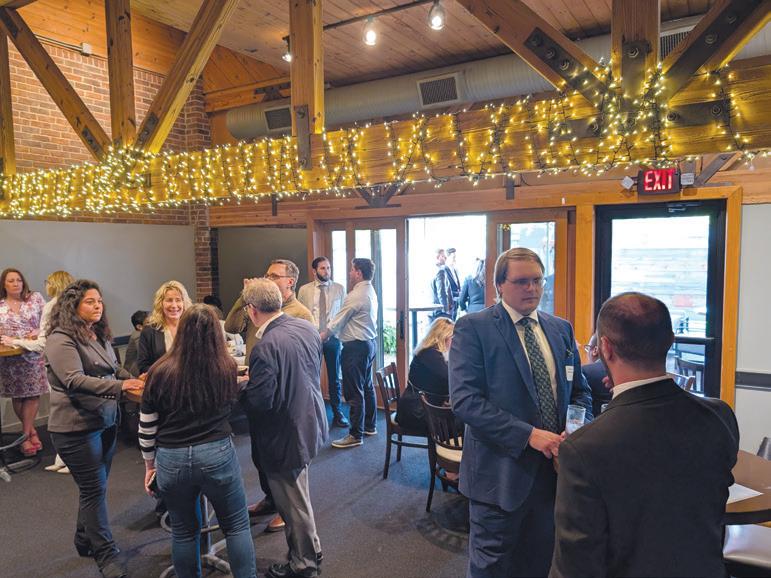
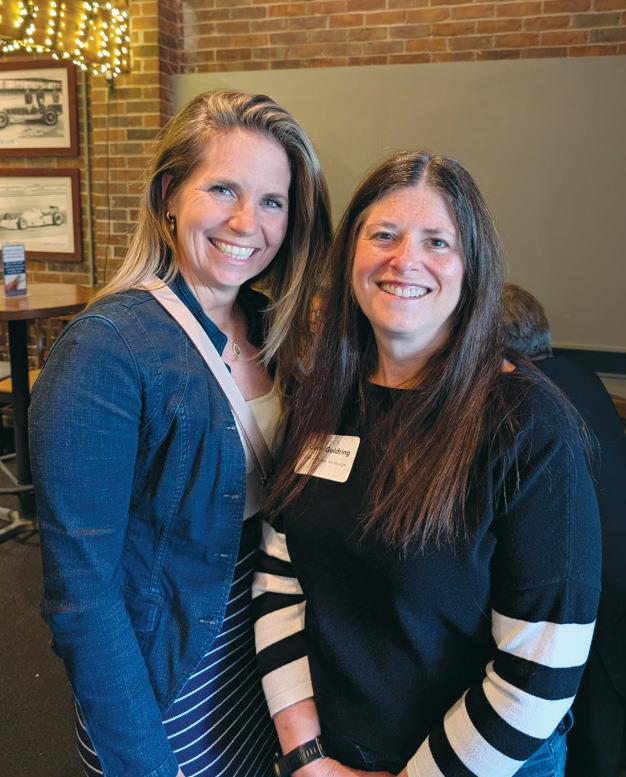
On June 26, 12 members of the Juvenile Law Committee had the amazing opportunity to visit the Oakland County Children’s Village. This complex offers a safe, structured, therapeutic environment for youth in Oakland County that includes secure detention, residential treatment, and shelter care. The outing included a tour of the facility and grounds thanks to Judge Maureen Kinsella.

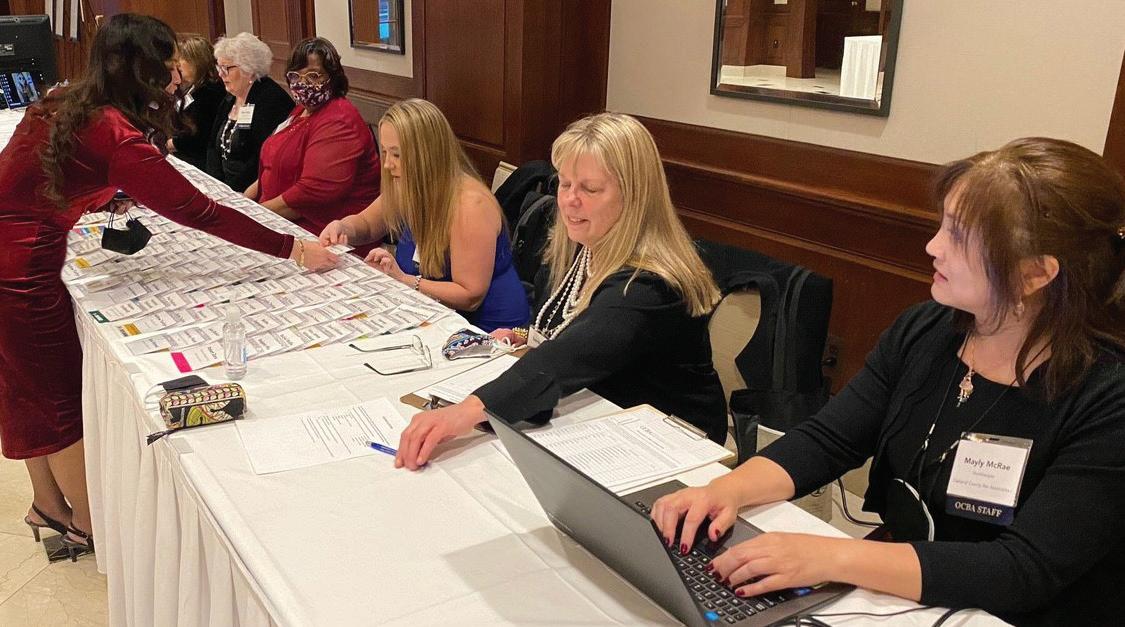
Executive Director
Jennifer Quick (jquick@ocba.org)
Deputy Director
Katie Tillinger (ktillinger@ocba.org)
Finance Director
Susan Maczko (smaczko@ocba.org)
Professional Development Director
Shanay Cuthrell (scuthrell@ocba.org)
Court Services Manager
Cristin Doble (cdoble@ocba.org)
Marketing Communications Specialist
MB Cairns (mcairns@ocba.org)
Bookkeeper
Mayly McRae (mmcrae@ocba.org)
Administrator – Court and Public Services
Janise Thies (jthies@ocba.org)
Administrator – Laches and Foundation
Lori Dec (ldec@ocba.org)
Unless otherwise indicated, please call (248) 334-3400 for assistance.
Address Changes
Billing
Board of Directors
Case Evaluator Applications
Committees
District Court Case Evaluation
Event Photos
Finance
Inns of Court
Judicial Candidate Fora
Laches Magazine
Lawyer Referral Service – (248) 338-2100
Mayly McRae
Mayly McRae
Jennifer Quick
Cristin Doble
Katie Tillinger
Cristin Doble
MB Cairns
Susan Maczko
Shanay Cuthrell
Janise Thies
Jennifer Quick
Janise Thies
Member Illness & Death Notification .........................Katie Tillinger
Membership ...............................................................Katie Tillinger
New Lawyer Admissions
News Releases
Oakland County Bar Foundation
OCBA Mediation Service
OCBA Policies
Pro Bono Mentor Match Program
Professional Development/CLE
Room Rental Reservations
Speakers Bureau
Volunteer Opportunities
Website
Katie Tillinger
MB Cairns
Katie Tillinger
Cristin Doble
Jennifer Quick
Janise Thies
Shanay Cuthrell
Mayly McRae
Janise Thies
Janise Thies
Jennifer Quick
Donald R. Bachand
Candace Becker
Brandi M. Blasses
Catherine Canman
Emilia Coto
Trevelyan Dorsett Cotten
Audrea Dakho
Hannah Shukri David
Erika DiLoreto
Xavier J. Donajkowski
Eric Fishman
Joshua M. Hoebeke
Stacey Joanne McDaniel
Kayln Jade Smith
Kennedy Smith
The OCBA held its 91st Annual Meeting & Awards Ceremony on June 5 at The Kingsley hotel in Bloomfield Hills, an event that celebrated the 2025 OCBA award recipients, members marking 40 years of legal practice in Michigan, and those who’ve been OCBA members for 50 consecutive years. This was more than just a ceremony — it was chance to catch up with old friends, make new connections, and enjoy a night of laughter, stories, and dinner while sharing in the pride in our legal community. During the annual meeting, the gavel was passed as outgoing President Dean M. Googasian handed over the reins to incoming President Sarah E. Kuchon.

